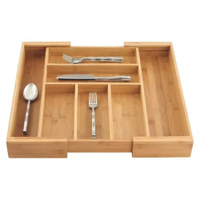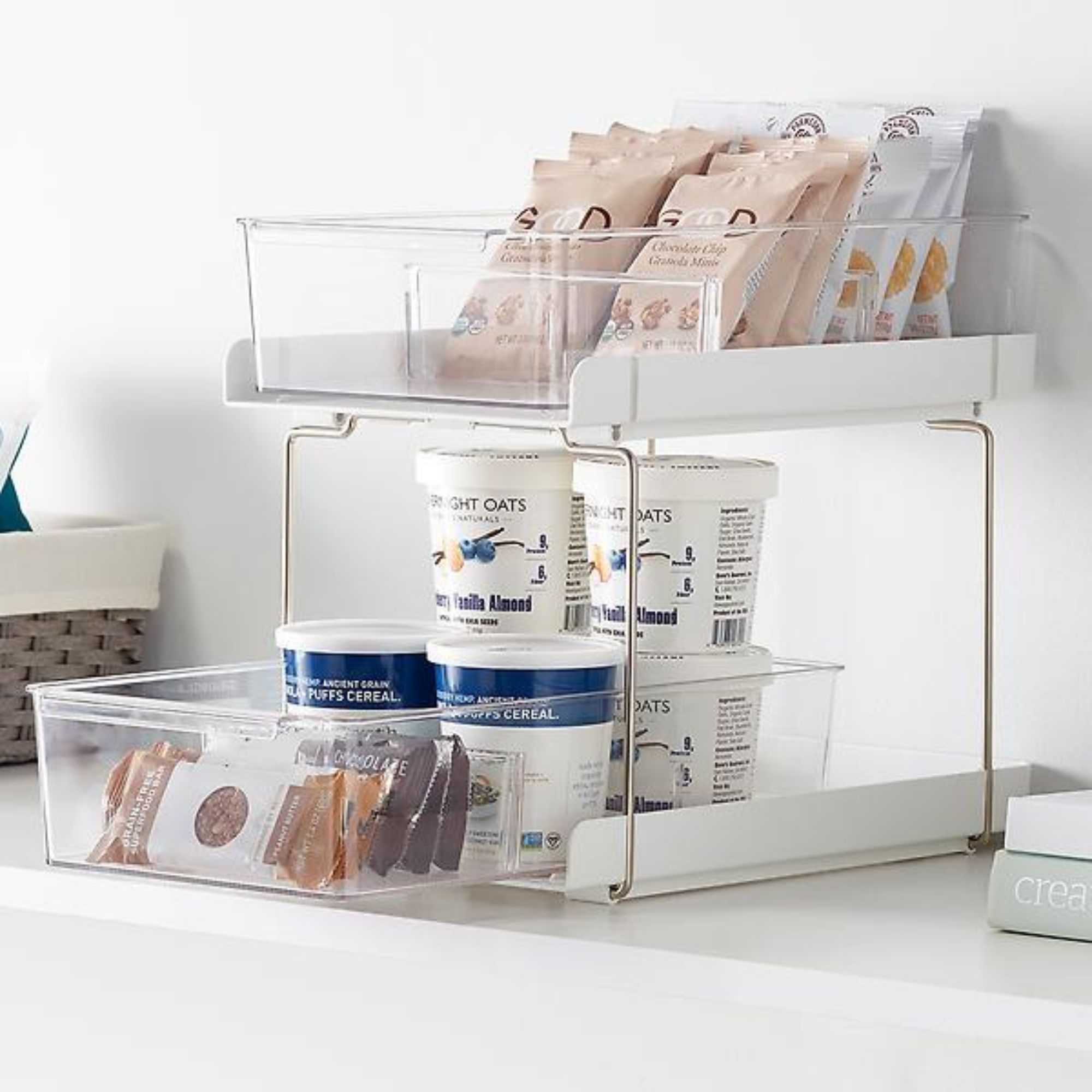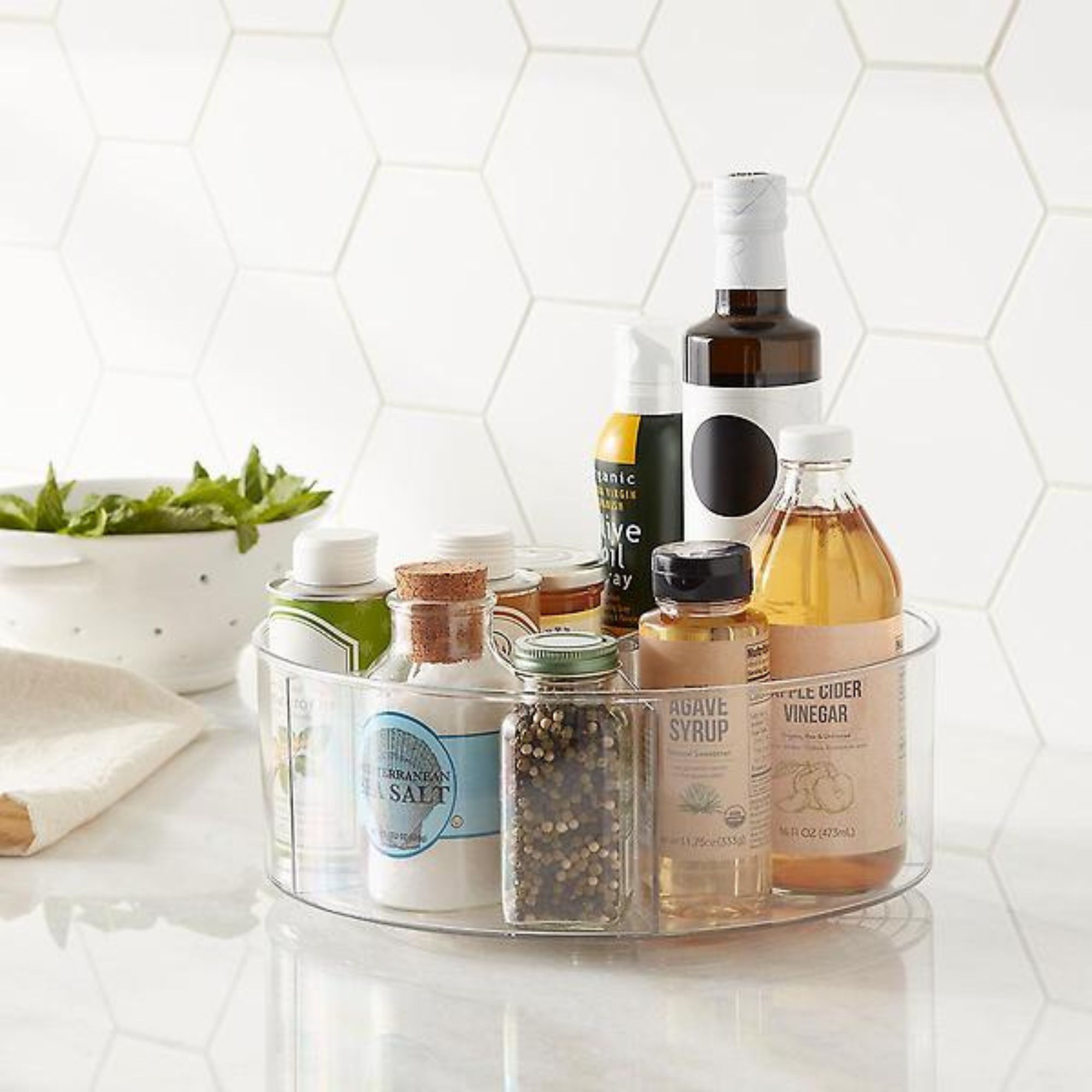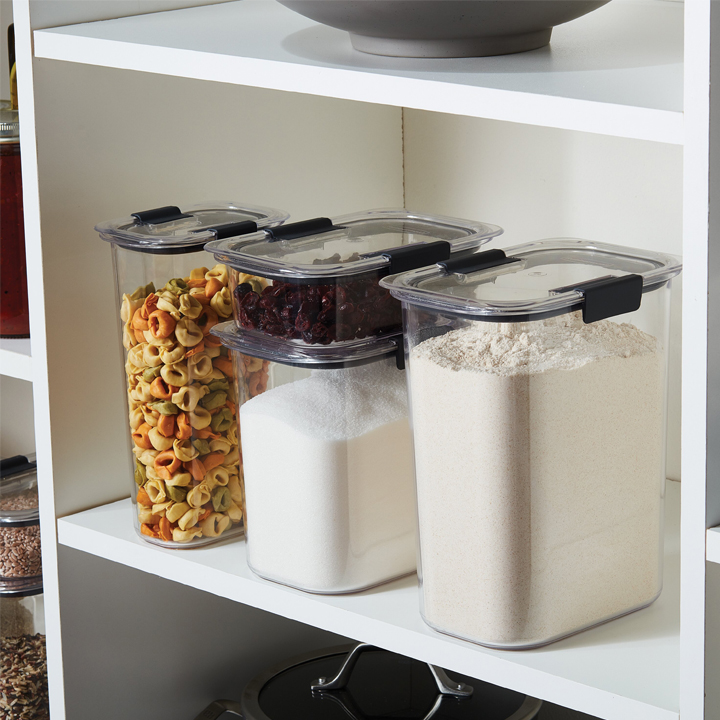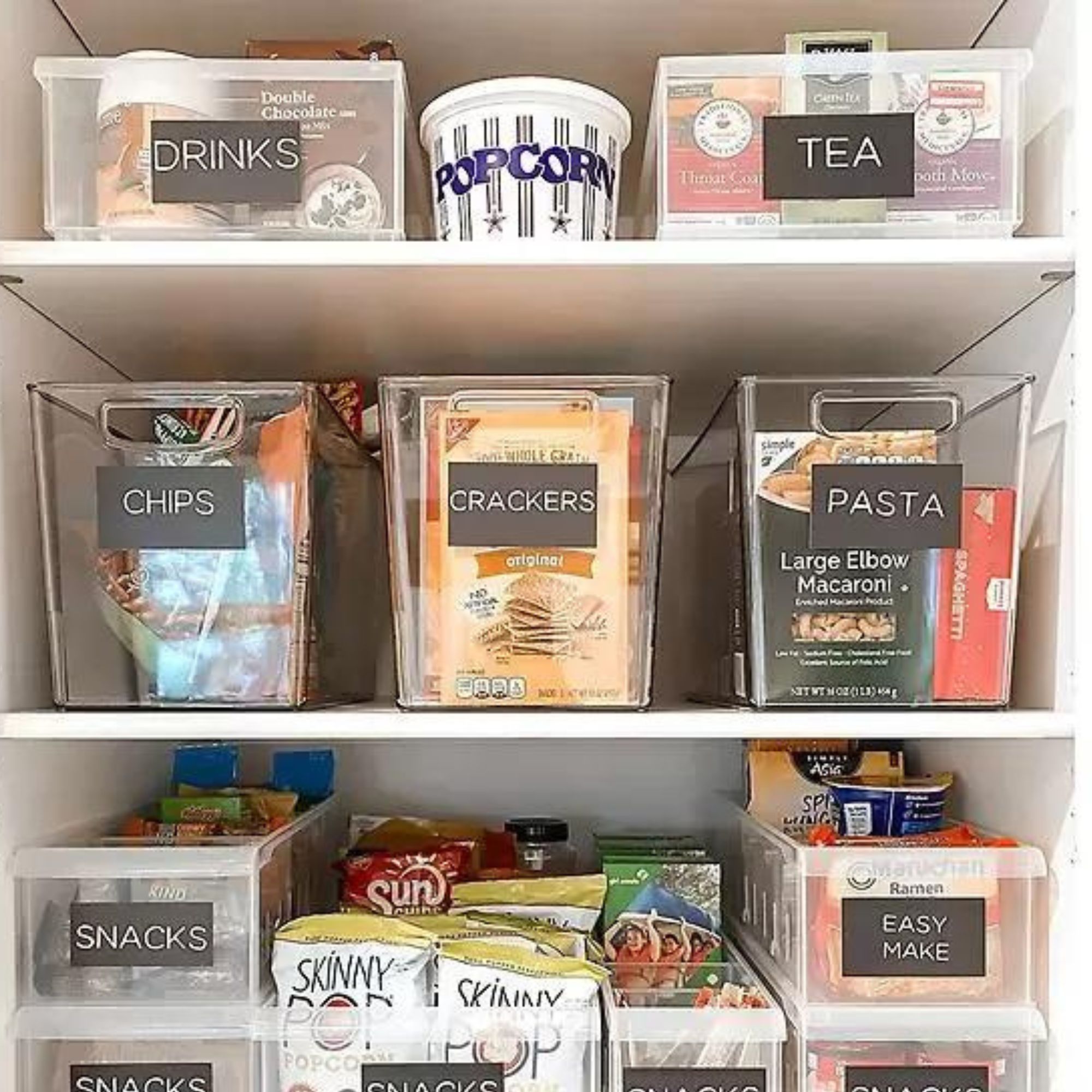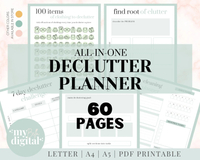Home organizing ideas – 16 ways to keep rooms orderly
A stylish home is a well-organized one, so organize every room like a pro with these expert-approved home organizing ideas
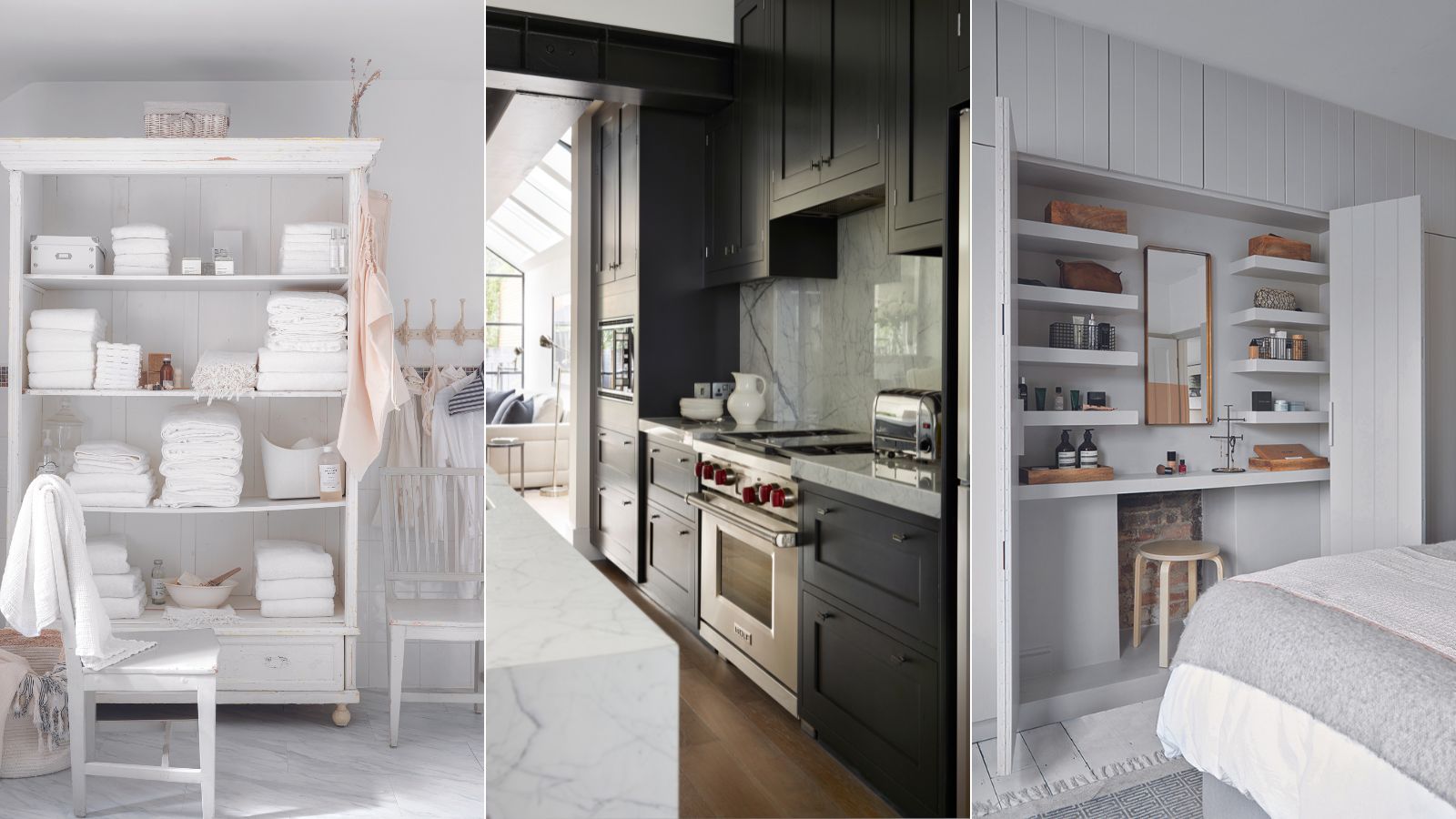
- 1. One room at a time
- 2. Group like-with-like
- 3. Be smart with storage
- 4. Maximize storage with dividers
- 5. Make more space with storage products
- 6. Invest in bespoke
- 7. Keep kitchen countertops clear
- 8. Never stop decluttering your closet
- 9. Be mindful when styling surfaces
- 10. Store food functionally
- 11. Keep toys tucked away
- 12. Keep books on shelves
- 13. Make the most of height
- 14. Use multifunctional furniture
- 14. Avoid having a junk drawer
- 16. Establish an organizing style
- FAQs
Chiana Dickson
Organizing every room can feel like a mountain to climb, but with the right strategy and home organizing ideas from the experts, it quickly becomes achievable. And the results can be truly transformative. Not just for your house but for your lifestyle and your mind, too.
The benefits of a well-organized home are well-documented. Studies have repeatedly revealed that even the lesser-known benefits of organizing your home significantly impact your stress levels. As the experts say, ‘tidy home, tidy mind’. The key is to find an organizational system that works for you.
Whether you’re starting small with cabinets and closets or tackling an entire room, we’ve compiled a list of effective home organizing ideas – with help from the experts – to ensure every space in your home stays organized and beautifully organized.
Home organizing ideas
Whichever part of the home you’re tackling, effective organization inevitably starts with some good decluttering tips. This process can be overwhelming, even emotional at times, but it’s worth it in the long run. The less ‘stuff’ you have, the easier it is to keep on top of it, and you’ll likely appreciate it more, too.
1. Focus on one room at a time

Organizing your entire house can feel daunting, particularly if it’s not something you’ve tackled in a while. Professional organizer Vicky Silverthorn of You Need a Vicky suggests taking your time and approaching it room-by-room with tiny tweaks to organize your home, to make it feel more manageable:
‘Don’t overwhelm yourself by pulling all the contents out in one go – it’ll take far longer than expected. Start small, focus on one area, work on and complete it, then stop’.
Assess each item carefully and think about when you last used it. Be strict with yourself by setting clear boundaries. When organizing clothes, don’t keep any you haven’t worn in the last year; rid yourself of expired or duplicate bath products, cleaning solutions, and cosmetics when organizing under a bathroom sink, and so on. After all, a cluttered house will make your house look cheap.
Once you’ve determined items you no longer need, remove them and place them into donation, recycle, or rubbish piles. After a good clear-out, you’re best placed to organize your space to its best potential.

Vicky Silverthorn has been a professional organizer for over 10 years, helping people from all walks of life to declutter and organize their homes. As an expert in the industry, she believes that your wellbeing starts at home; if your home is in shape, other elements of your life will follow. Vicky has written Start with your Sock Drawer, an Amazon bestselling book on living a less cluttered life.
2. Group like-with-like
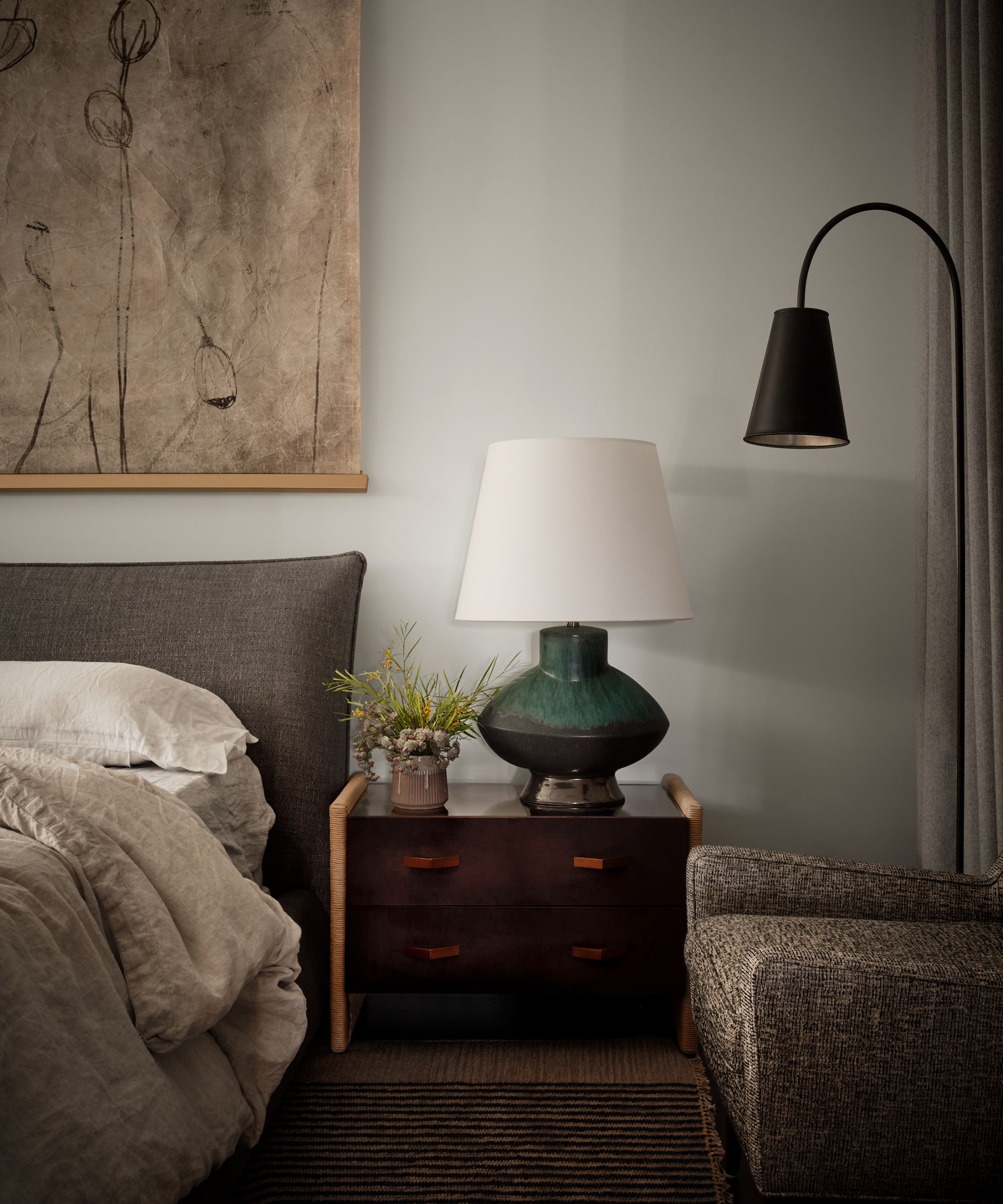
Regardless of what or where you’re organizing, grouping items is an essential step toward implementing an efficient system. 'The benefit of sorting your ‘stuff’ into categories is two-fold. As well as contributing towards a thorough decluttering, it also makes zoning a room that much easier,' explains home organizer Emma George of Declutter with Emma in relation to organizing a bedroom.
‘Designating an area for sleeping, dressing, putting makeup on, and so on gives structure and creates a nice sense of flow to the room; you’ll have a clear idea of what needs to go where. This will help you stay on top of the organization going forward’.
It’s worth noting that when space is limited, so when organizing a small bedroom in this case, these zones will inevitably cross over. To avoid confusion, group like items together into containers or baskets so they can be stored anywhere in the room and then easily moved around as and when you need them.

Emma has always been a very organised person, and loves nothing more than tackling clutter and reorganizing. Her passion stems from knowing how this can have such a positive impact, not only visually, but also within your mind. A tidy space is a tidy mind.
3. Be smart with storage
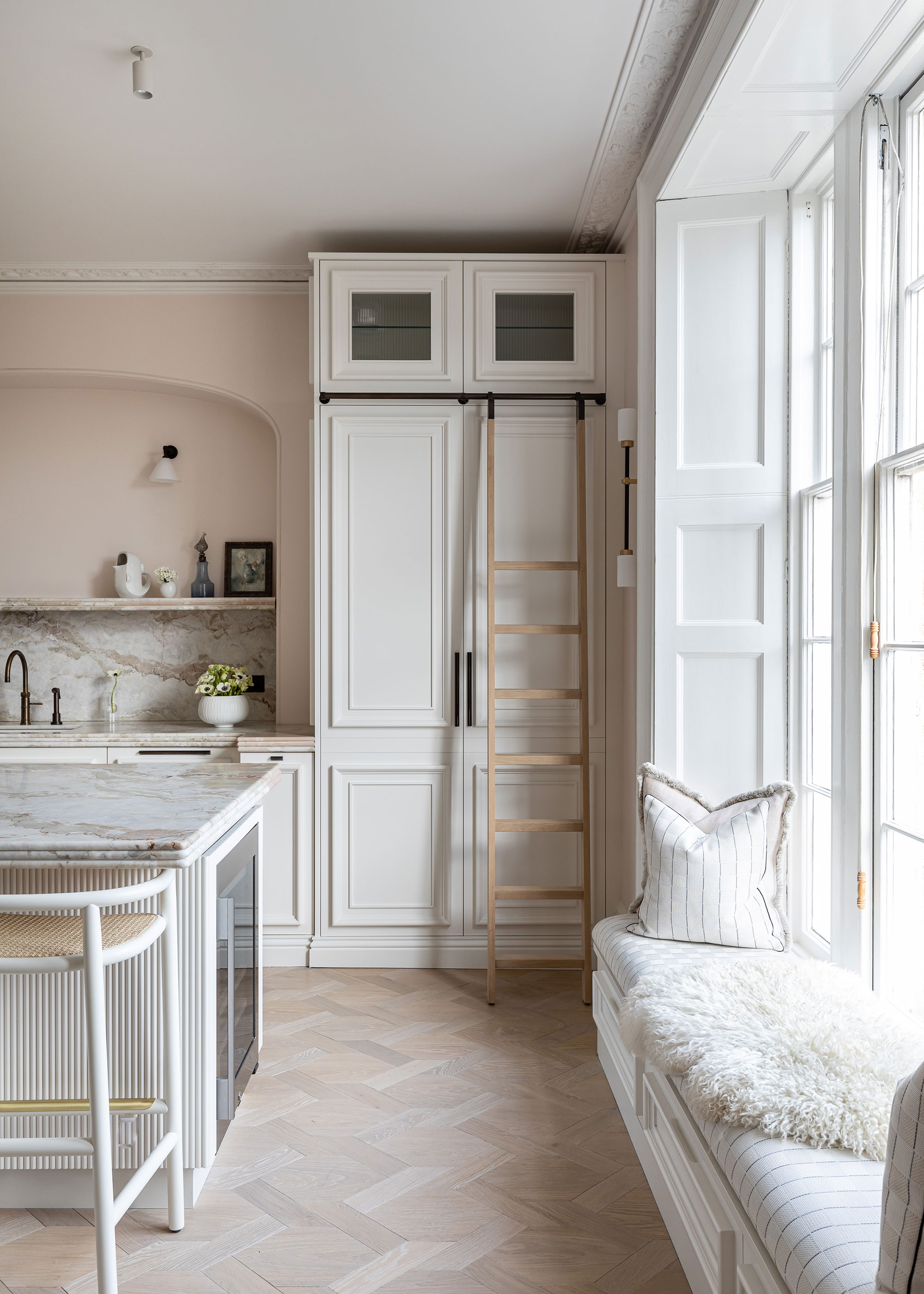
Prioritizing access to items you use most is rule number one when deciding what goes where. To do this effectively, you’ll need to free up prime storage space. This means that when dealing with smaller spaces, such as organizing a small kitchen, you’ll have to think outside of the box – or the room, in this case.
‘I have a sideboard in the dining room, right next to my small kitchen, where I store my bulky crockpot’, says Alexandra, co-founder and interior designer at Clairrow. ‘I don’t use it every day and relocating it means I free up storage space’.
Similarly, if your cabinets are full, think about alternative solutions; ‘cupboards may be the traditional go-to storage option, but it’s worth bearing in mind that so many items store better in a drawer’, says George Forsyth, director at Drew Forsyth & Co.
Organizing pots and pans is a great example. A wide drawer allows you to store all your everyday cookware in one readily accessible space, which is much easier than rummaging around at the back of a cabinet. If you go down this route, consider installing an internal pan rack to avoid them rattling when you open and close the drawer and line the bottom to prevent scratches.
For super smart organizing, delve into the king of tiny space living: Astronaut Chris Hadfield shared the out-of-this-world organizing tips that he used on the International Space Station that you can implement with ease at home.
4. Maximize storage with dividers
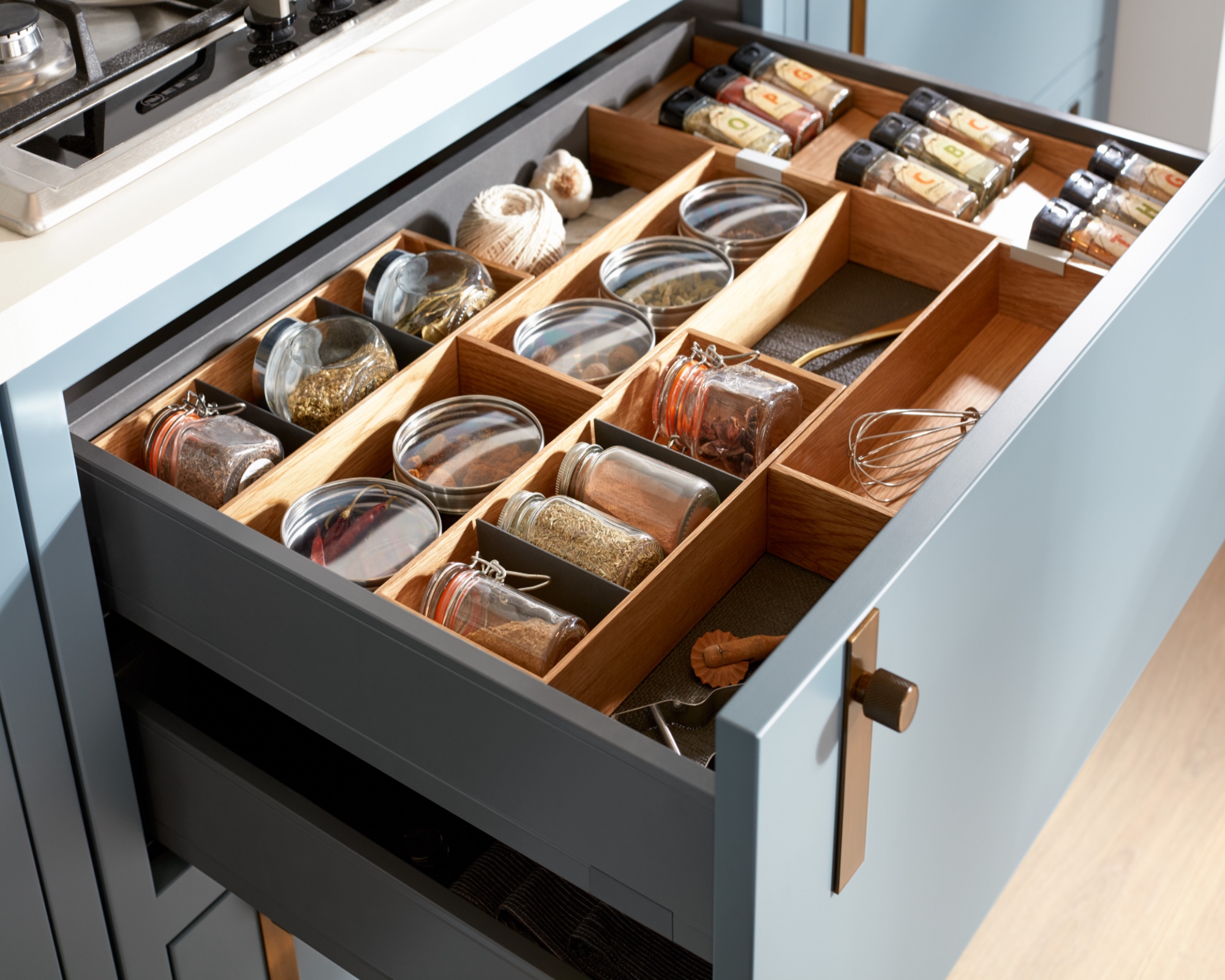
Whatever they hold, drawers tend to dissolve into disordered chaos if not kept in check. Dividers will quickly become your best friend, particularly when it comes to organizing kitchen drawers. Save yourself from hassle – and potentially a burnt meal – by separating sections by category: knives, cutlery, peelers, baking equipment, etc.
‘If you have any extra-long items, like a rolling pin, salad servers, or a large wooden spoon, try a diagonal organizer’, advises designer, Alexandra. ‘This configuration provides space for bulkier items, and the small corner cubbies are perfect for tiny or oddly shaped utensils.'
Vertical separators are useful for storing larger items such as chopping boards and baking trays and keeping pan lids in check when organizing deeper drawers. They’re also worth bearing in mind when organizing Tupperware, too.
Expandable Bamboo Silverware Tray
$31.99 at The Container Store
Add an expandable bamboo cutlery tray to your kitchen drawers for a beautiful way to store your flatware and utensils.
5. Make more space with storage products
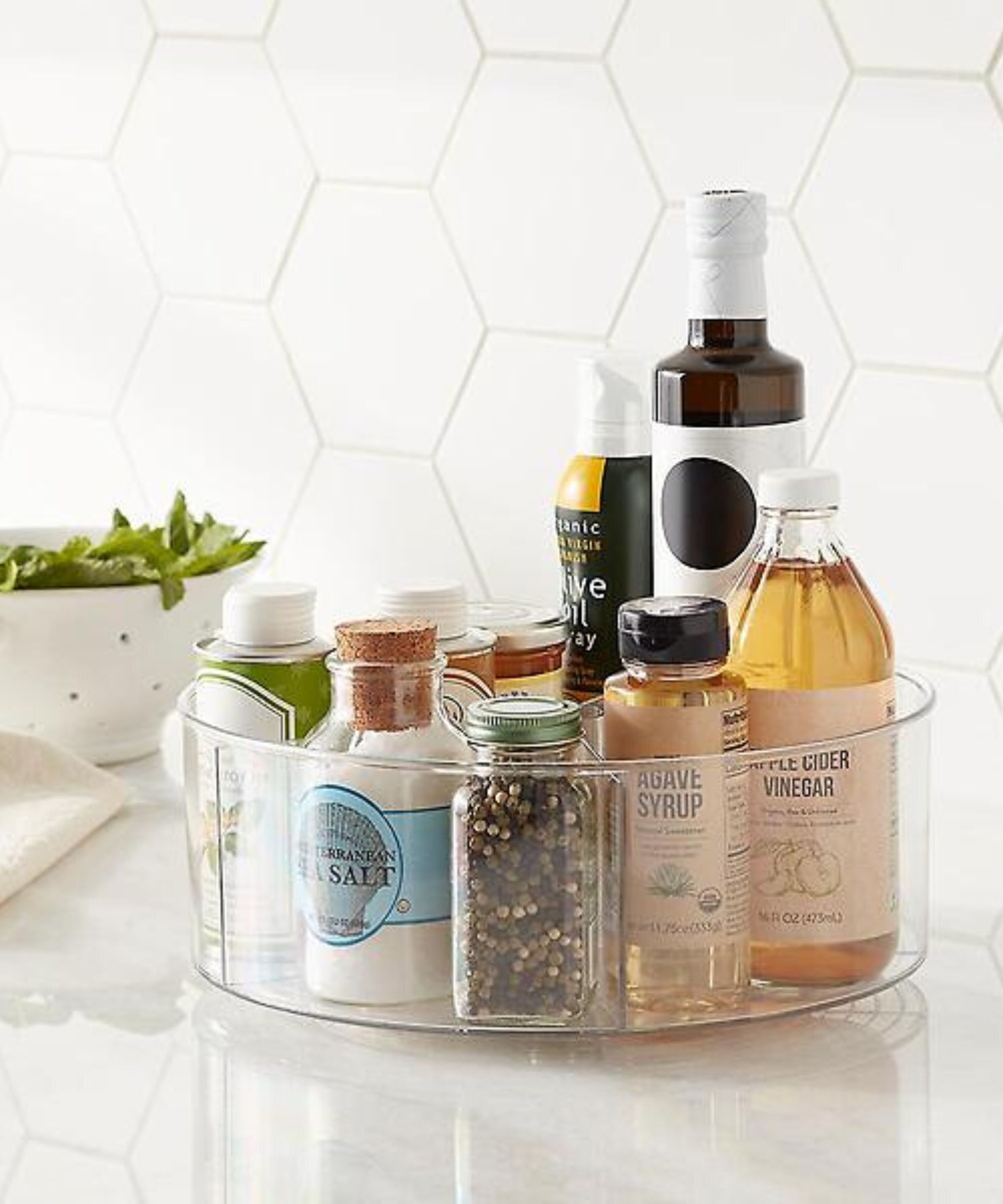
From baskets and bins to risers and carousels, integrating the storage products professional organizers can't live without is a great way of utilizing space to its best potential. ‘It’s a really simple way to make the space look tidier and more structured’, says interior designer Katharine Pooley.
Whether you’re dealing with awkward corner cabinets, organizing deep pantry shelves, or kitting out closets, take measurements before investing. Ideally, you want a snug fit so you’re not left with any dead space.
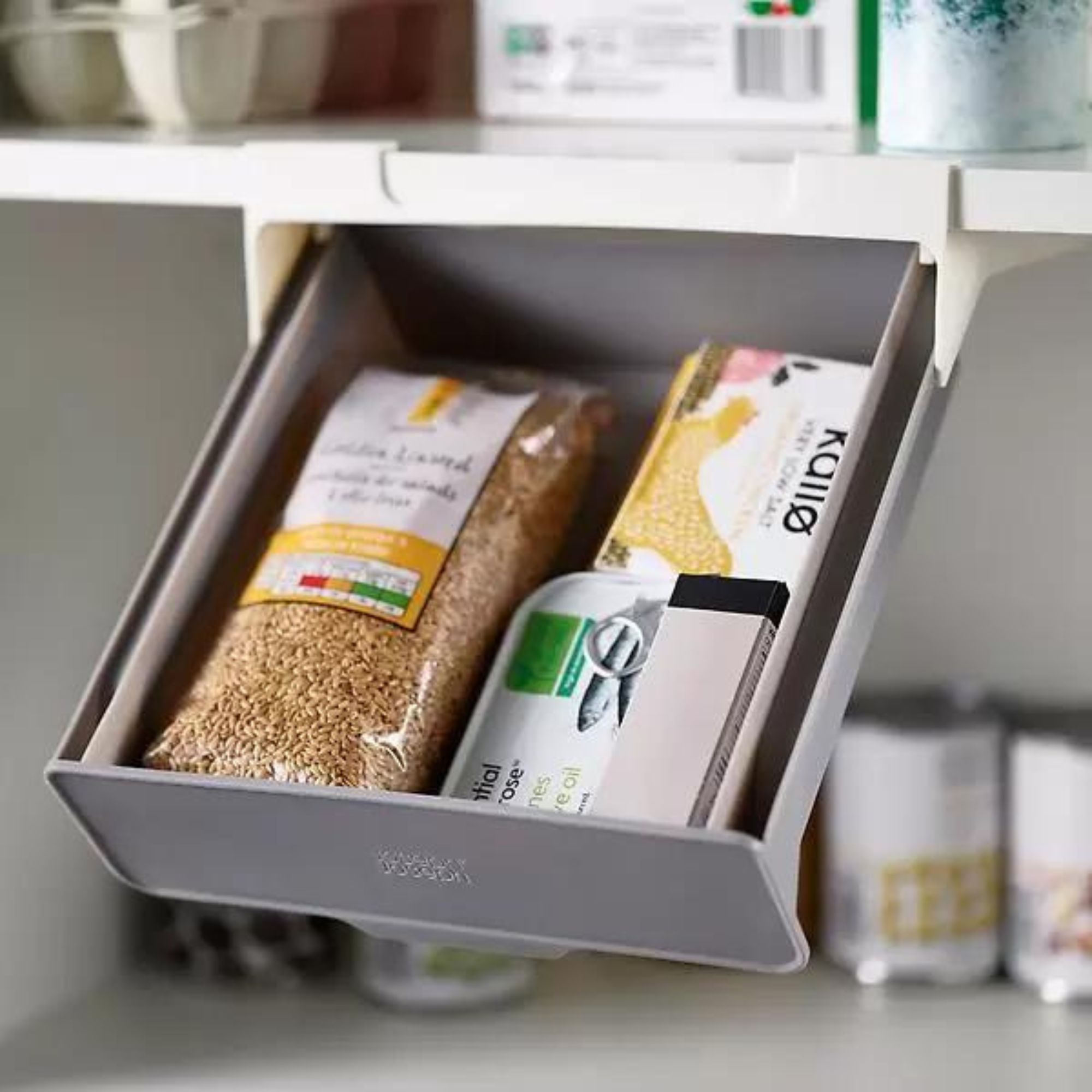
This catchall drawer attaches to the edge of a kitchen shelf, turning unused space into functional storage.
6. Invest in bespoke
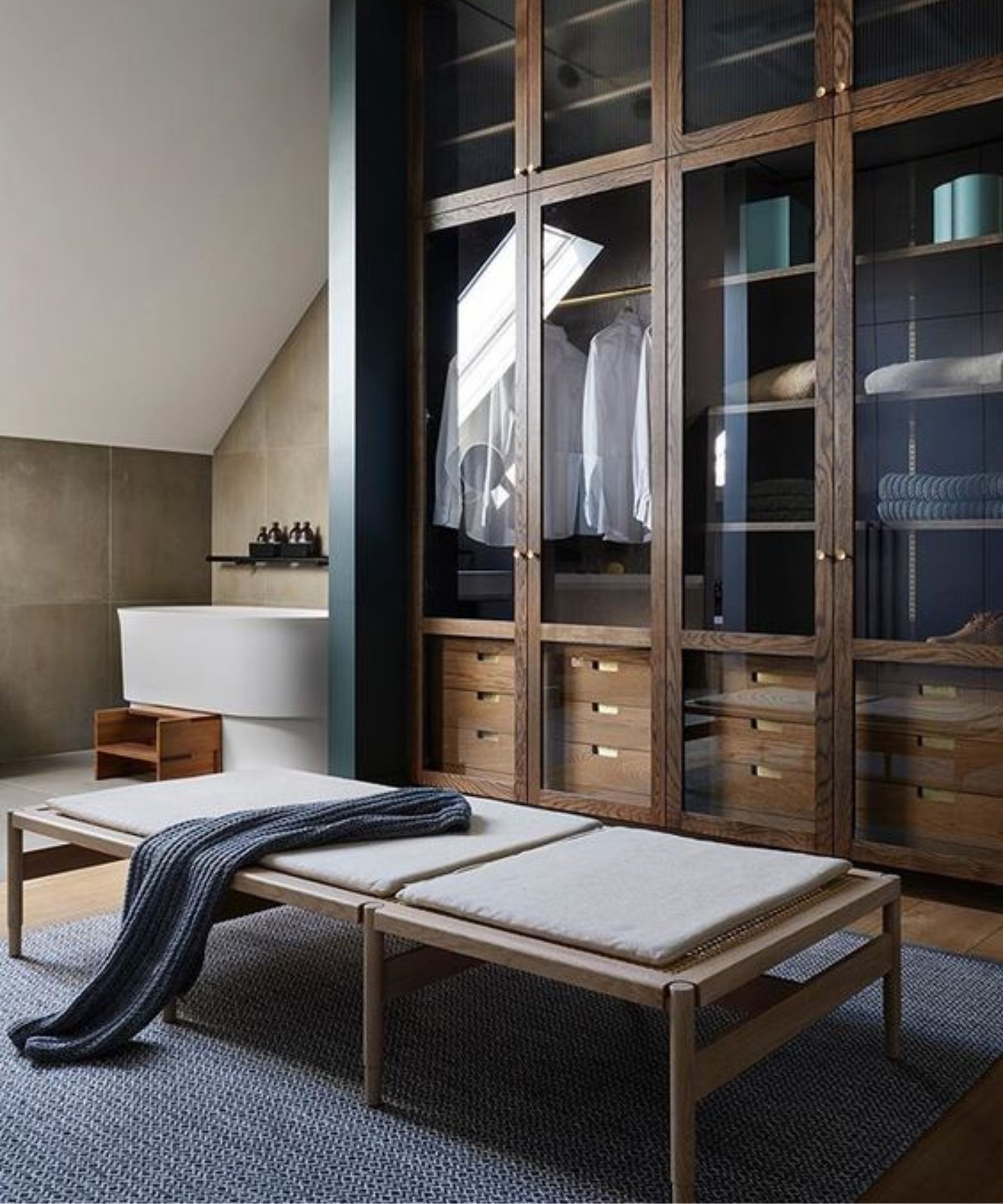
If you really want your home storage to work for you, there is little better than commissioning bespoke joinery.
You could even take it one step further with niche inserts specifically designed to suit your organizational needs, whatever they may be. Fashionistas might opt for built-in cubbies to store handbags and shoes, while for keen cooks, Tom Howley, design director at Tom Howley, recommends a bespoke option for organizing herbs and spices perfectly.
‘Herbs and spices are one of the trickiest items to keep organized in the kitchen. A bespoke drawer inlay allows you to lay jars with their labels easy to read at a glance, so you can clearly see what you have. Not only is this more efficient when cooking but storing them in a cool, dark drawer can extend the life and flavor of your spices.
7. Keep kitchen countertops clear
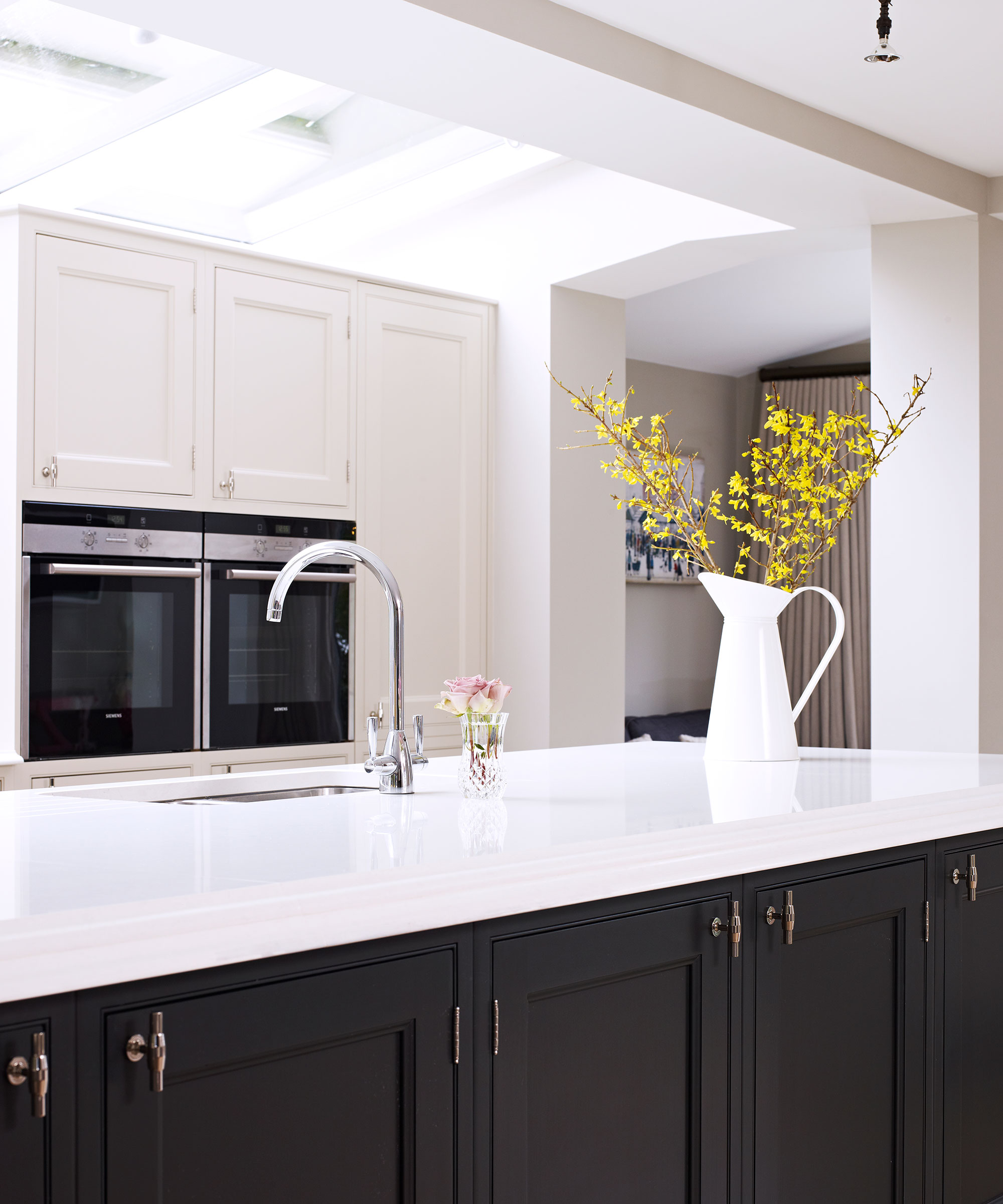
Keeping surfaces clear of clutter is a prime organizational trick in any room, but it’s particularly relevant when organizing kitchen countertops. As well as looking smarter, it makes for a more functional cook space and an easier clean-down afterward.
While there are several things you can do daily to keep kitchen counters clear, you will be fighting yourself if you don't establish some organizing systems to keep clutter at bay.
Keep appliances to a minimum; just one or two you use daily – stow the rest away. Group smaller, like items together on trays or in containers to keep them as one – tea and coffee-making essentials, cooking oils and seasonings, for example. Limit garish packaging by decanting it into coordinating storage where you can. Make wall space work hard with shelving, hooks, rails, and magnetic strips to hold utensils and knives.
‘To ensure countertops remain neat, tidy and well-organized, we urge our clients to declutter at least once a day,’ says Kate Pawlowski, professional organizer and co-Founder of Done & Done Home.

Kate always loved to organize and perfected her de-cluttering skills on her childhood friends’ bedrooms. Kate’s training in psychology allowed her to understand the deep-seated reasons why people hold on to possessions even when they cause problems.
8. Never stop decluttering your closet
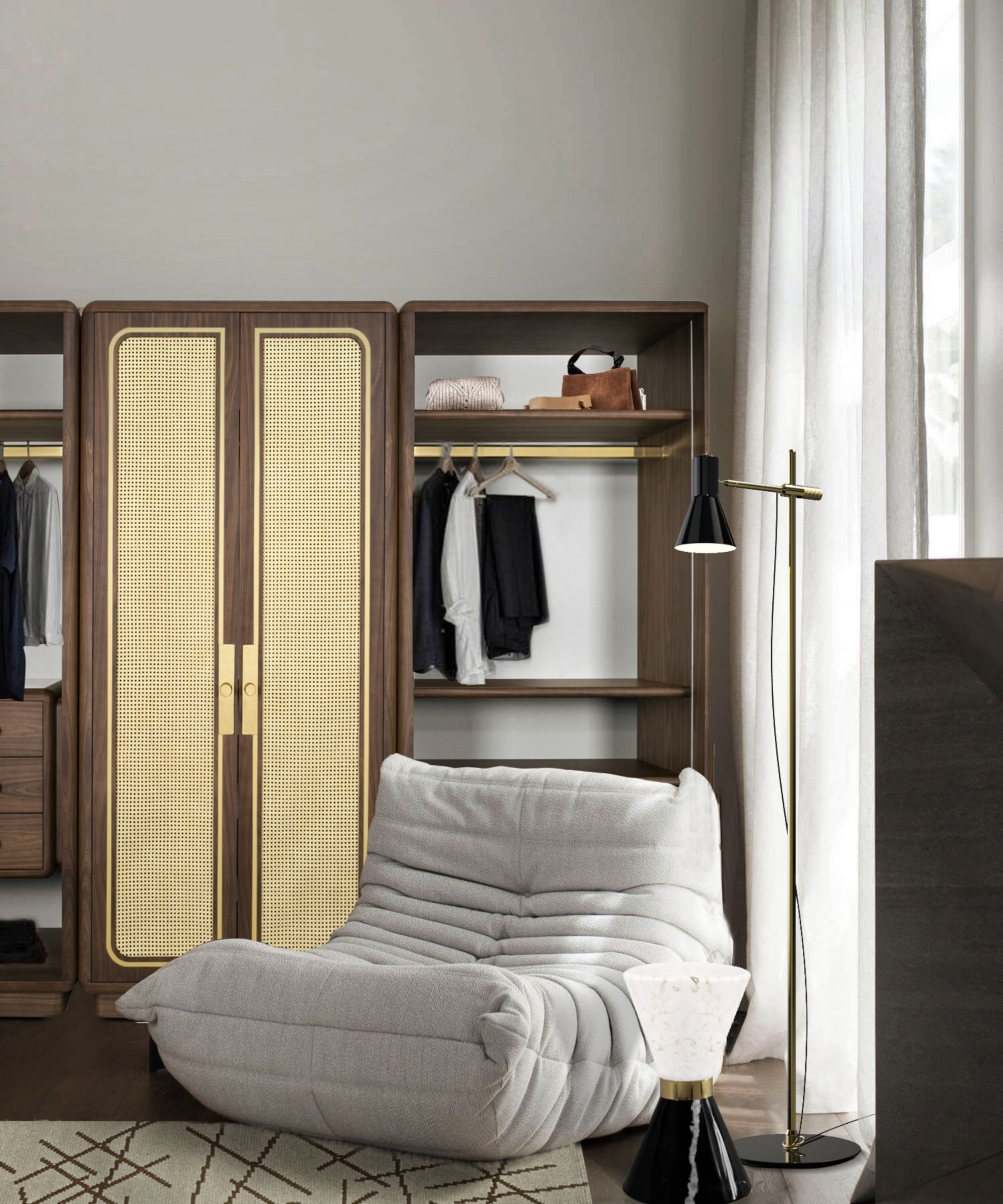
We never stop organizing clothes. From the clothes we buy and need to house to doing laundry and putting it all away, it is a category in constant flux. As such, we should always look to declutter a closet and stay on top of the clothing clutter before it becomes overwhelming.
Rather than cram in everything you own, reserve your closet for items you wear or use regularly. Then, organize clothing by category to make finding the specific piece you need far easier for a more organized morning routine. When your closet is full, organize a dresser to store anything that won't crease easily, and file folding clothes where you can so they’re stacked vertically in drawers rather than in flat piles.
If you’re organizing a small closet, the same rules apply, but you might want to consider adapting your closet storage a little to make the most of the space you’ve got.
‘Take a close look at your closet and use the features to your advantage; if you have a lot of shelving, look at using boxes for specific clothing or, if the wardrobes are very tall, look at using multiple hanging rods,’ advises interior designer Jenni Greenwood of Greenwood Interior Design.
9. Be mindful when styling surfaces
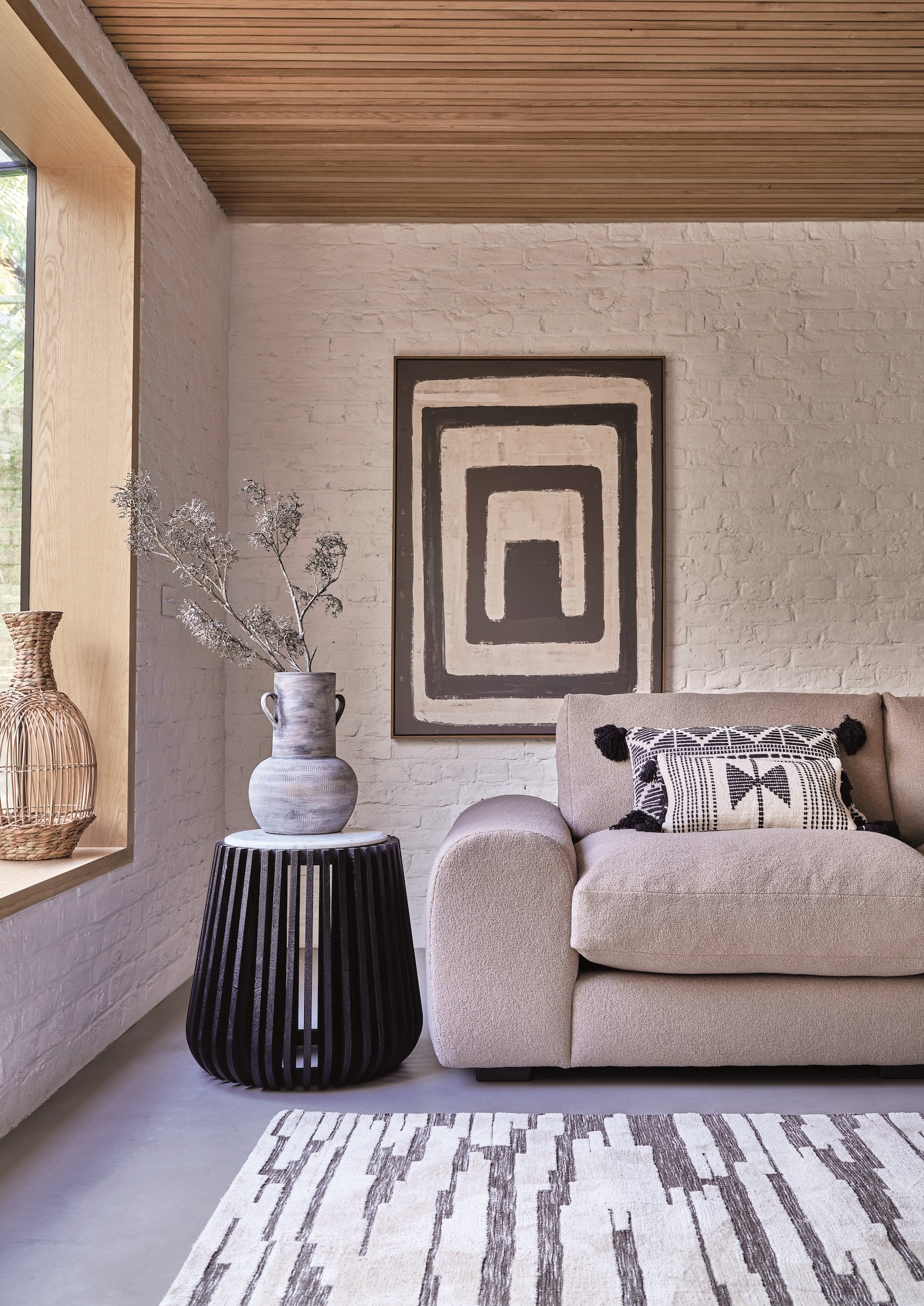
Styling your surfaces adds a bit of personality to any room, but you should be cautious when piling up the decor to prevent it from looking like unrelated clutter.
One way to get around this is to follow the rules of clustering – the act of carefully curating related pieces of decore, preferably function in that space, to help fill empty space without it just sitting there and collecting dust. In the kitchen, for example, you might cluster some salt and pepper grinders and cookbooks on a tray on the counter. They add something extra to the room while offering practicality, so they don't take up important workspace.
To avoid a cluttered feel, home organizer Emma George also recommends using storage baskets and containers to keep items together on surfaces so they do not spill over and take up all the usable space:
‘Stylish baskets placed on shelves or chests of drawers are handy for keeping your unsightly items close to hand without sacrificing a stylish scheme. If you’re organizing makeup, consider reusing old candle jars or small plant pots to store brushes and keep everyday items neat in a small set of clear drawers to access them easily,' she says.
10. Focus on functionality when organizing food
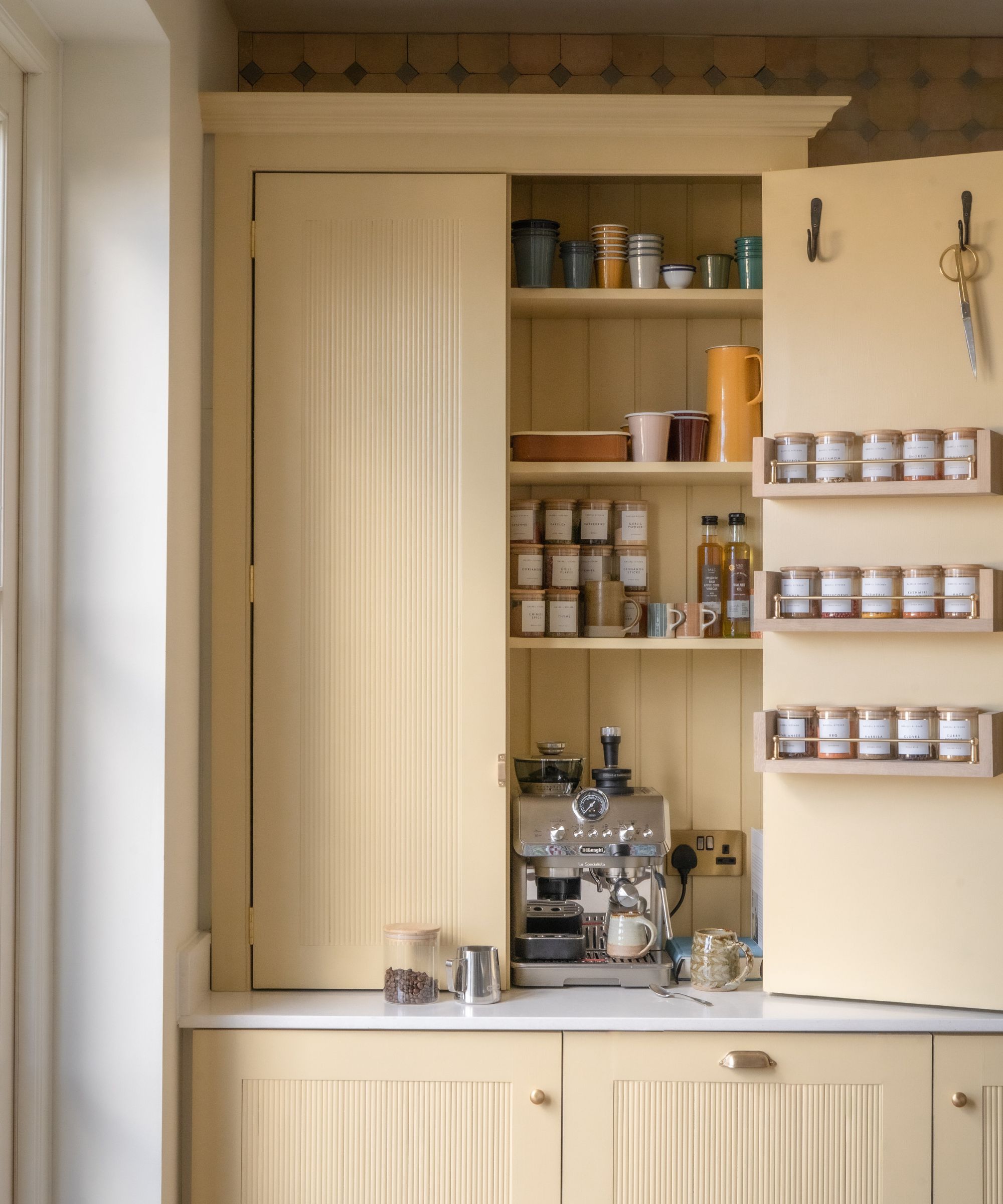
An orderly kitchen is not much use without an equally well-ordered food storage system. Chilled and dried goods are the obvious place to start, but be sure to include organizing a chest freezer in your to-do list – usually stored elsewhere in the home such as the garage or utility, they easily get forgotten about.
When it comes to food, knowing where everything is – and being able to find it quickly – is the main aim. Storing items by categories (such as meats, veggies, homemade meals, etc) in labeled, transparent containers helps, as does keeping a running inventory. Decanting food also helps keep it fresher for longer.
To further reduce the chances of food waste, professional organizer Brenda Scott of Tidy My Space recommends implementing the ‘FIFO method: ‘Think “first in, first out” – when you purchase an item, it goes to the back of the grouping so the item with the nearest expiration date always remains at the front,’ she says
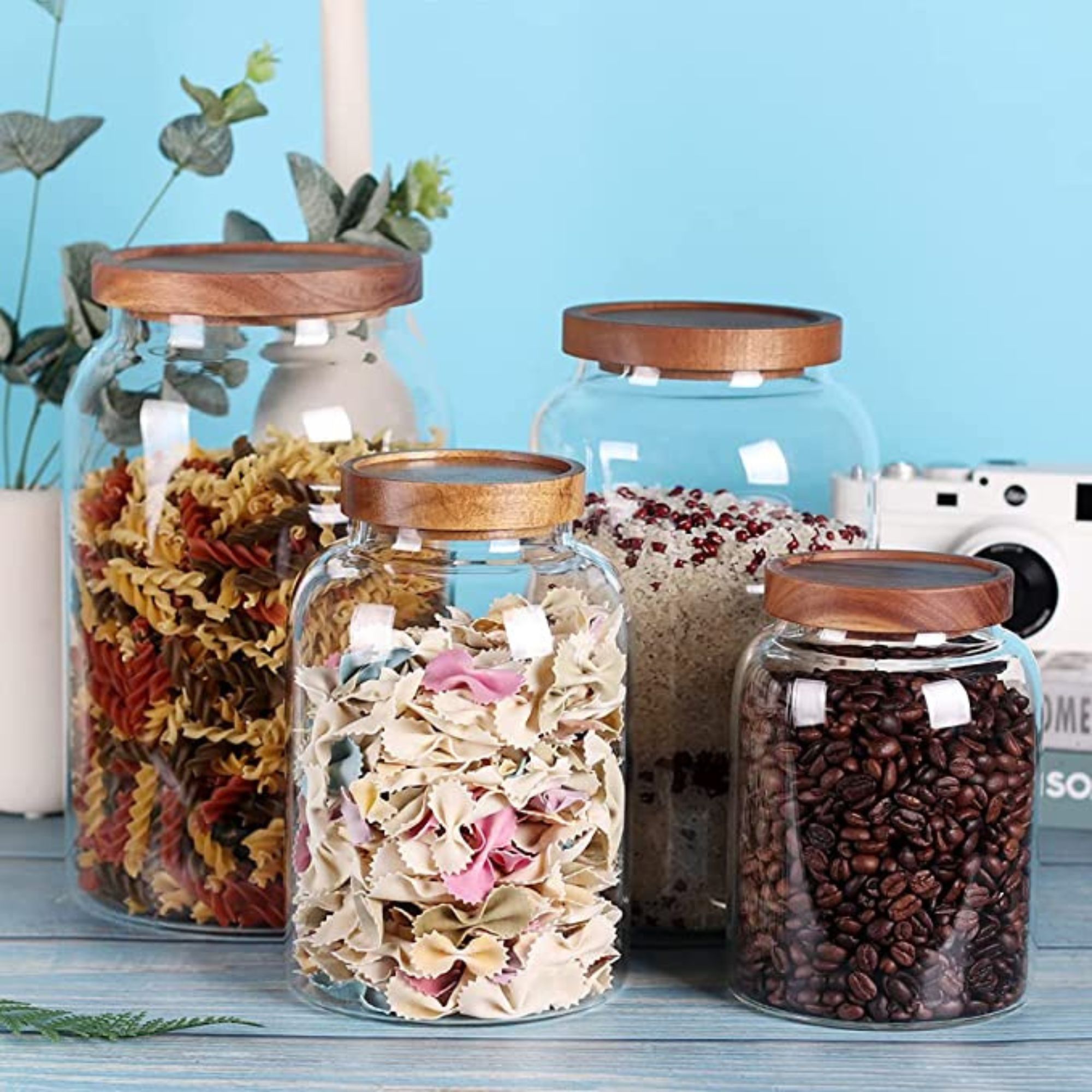
This large glass jar has an airtight wooden lid, making it a stylish storage alrerniture for dried food goods.

Brenda Scott is passionate about home organizing, decluttering, and creating a safe home. At Tidy My Space, she helps people to keep their homes tidy when life gets busy. Brenda shares useful tips and gives practical help with sorting and editing her clients' spaces, leading them to feel less stressed and bringing the luxury of time to be spent with family, friends, or on themselves.
11. Keep toys tucked away
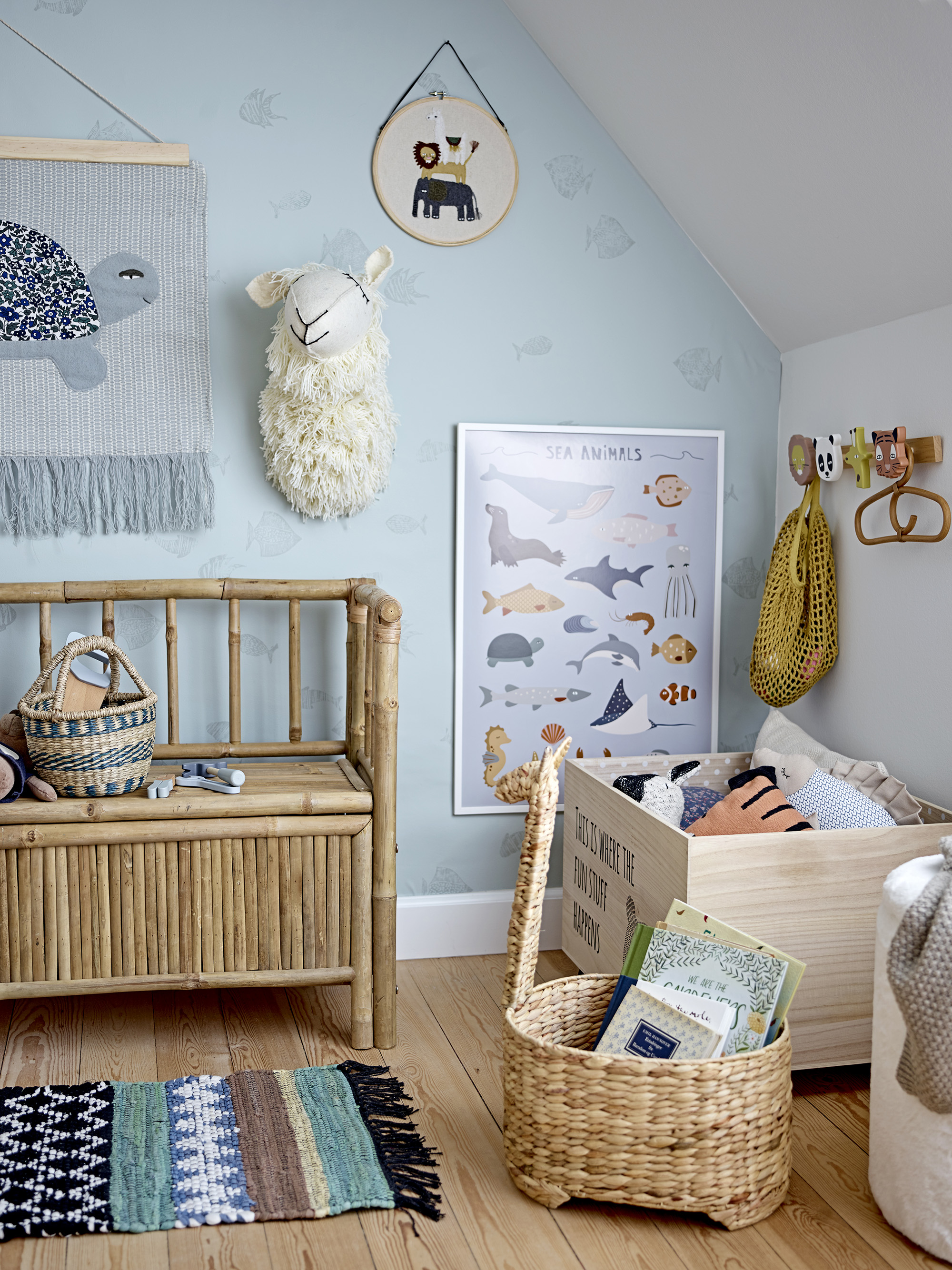
When it comes to organizing toys, allocating effective storage ideas to designated rooms of the house, your child’s bedroom, for example, is sensible. But don’t expect them to stay there – any room is a playroom for children. According to professional organizer Vicky Silverthorn, if you’d rather avoid tripping over teddies and treading on Lego, a simple system is your best bet.
‘If it’s too complicated and detailed, or has too many steps, kids (and adults!) won’t stick to it’, she says. With that in mind, consider leaving an empty basket in each room of the house that your child can throw toys into throughout the day and instill a habit of returning them to their homes before bed. This part doesn’t have to be a chore either – label open baskets, bins, and boxes with simple categories so you (and/or your little ones) can throw it all back in.
12. Keep books on shelves
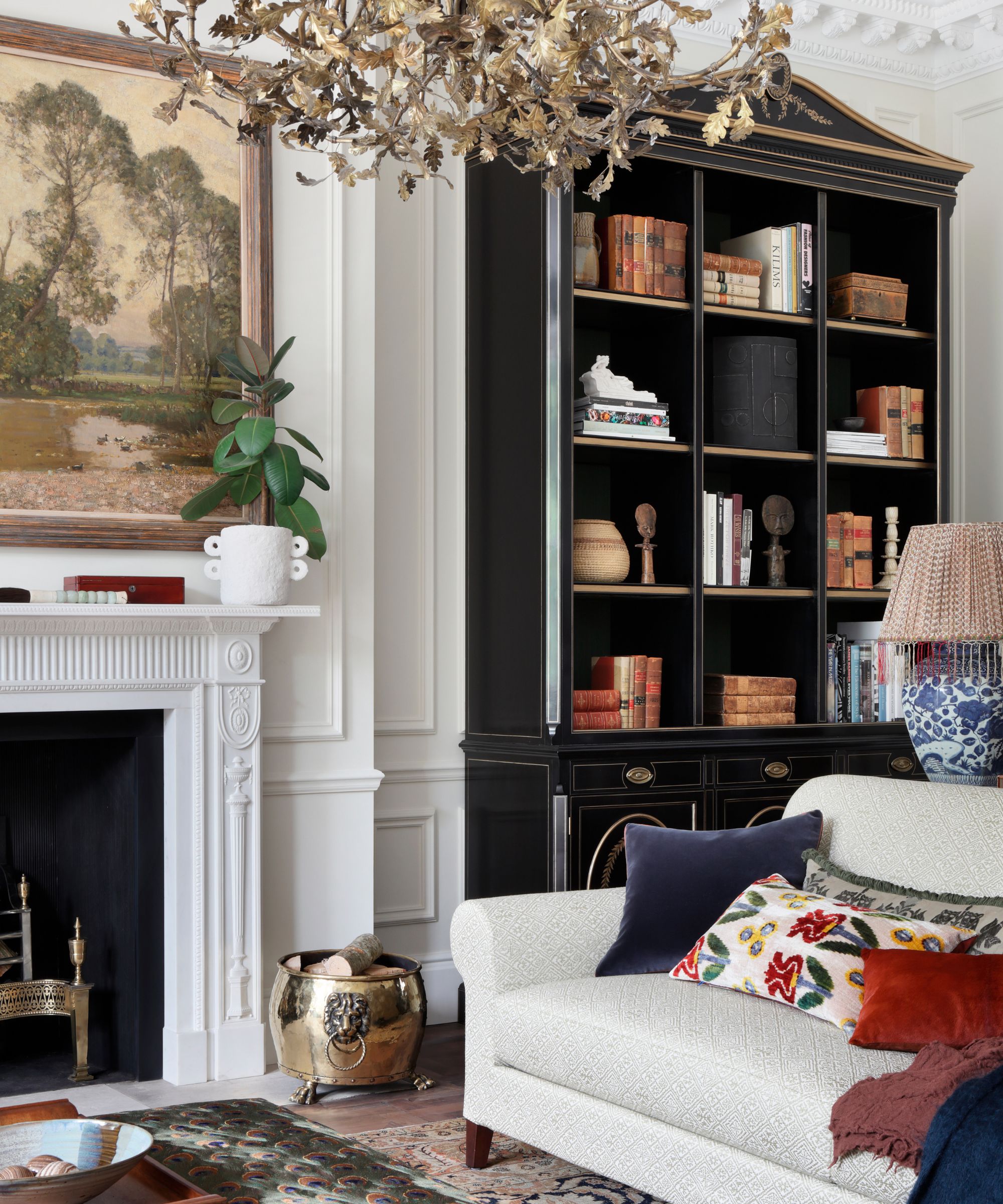
As well as being a storage necessity, a bookshelf has the potential to become a decorative feature of any room. There’s no one-size-fits-all approach when it comes to organizing a bookshelf. Start by deciding on a system that works for you alphabetically, by genre, color, height order, or something else entirely.
To ensure a practical and stylish display, don’t be tempted to cram books in; ‘crowding books tightly on shelves make them impossible to pull out, while overcrowding can make for a cluttered feel,’ says home organizer Ben Soreff of House to Home Organizing. Avoid this with the ‘two-thirds rule’; only fill two-thirds of each shelf with books. Add decorative accessories or leave clear for a minimalist look.

Ben Soreff is a professional organizer from Portland, Maine, with 16 years of experience helping people to organize and declutter their homes, as well as working with hoarders. As a father to two, Ben knows well the challenges of keeping a house not only functional but looking beautiful. He also brings a dad’s perspective to organizing solutions.
13. Make the most of height

Thinking vertically is an easy way to claim back space in a room. Make your walls work overtime; they’ve got plenty of storage potential. While open shelving is the obvious go-to, rails and hooks can make for a practical and stylish display.
‘Wall-mounted hooks are one of the most creative (and homely) solutions. They can turn your apron collection into textured wall art, your chopping boards into wooden focal points, and your backsplash into an untapped storage spot, all while freeing up other space, too’, says Al Bruce, Founder of Olive & Barr.
Fitting a rack or narrow shelving to the back of a kitchen cabinet or pantry door is also a clever hack. Small jars, tins, packets, etc., can be used to store Tupperware or pan lids, and the corresponding containers and pans can be stored in the cabinet itself.
Utilizing the back of the door works equally well in closets, too. You could always swap in cubby-style hanging organizers designed to hold shoes, bags, and accessories, depending on what you’ve got to store.
When it comes to corralling smaller items, stacking storage is always a good bet. They allow you to store more on any surface, whether in a bathroom cabinet, a chest of drawers, or the fridge.
14. Use multifunctional furniture
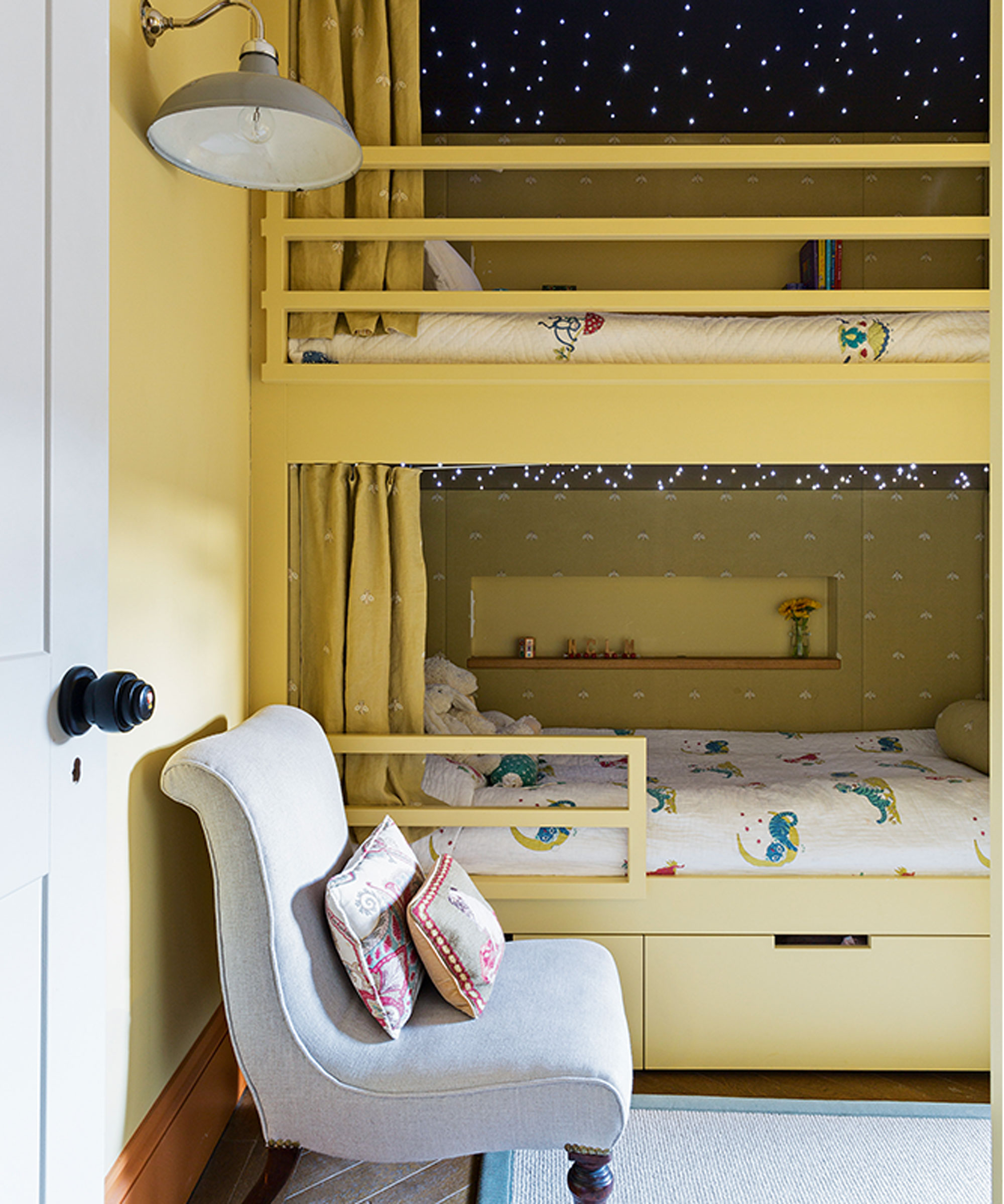
You may feel they’re useful for hiding clutter, but bulky cabinets, sideboards, dressers, and wardrobes encourage hoarding and can quickly undo all your good work – out of sight, out of mind is not conducive to effective organization! It’s also a lot of floor space to dedicate to one sole purpose, whether you’re organizing a small space or not.
To maximize available space and practice good organizational habits, choose furniture that has multi-uses instead. An ottoman or under-bed storage is a great example; experts highly recommend the investment.
‘Ottomans provide the most impressive storage, with the entire mattress base lifting via an easy-to-operate hinge mechanism – perfect for those seeking extra space to store spare linens and bulky items like winter duvets or ski wear,’ says Phillipa MacDermott at Feather & Black.
Alternatively, think about creating multifunctional storage pieces with your existing furniture. For example, a small bookcase as a nightstand or a storage trunk that doubles up as a seat in the hallway to take off your shoes.
14. Avoid having a junk drawer
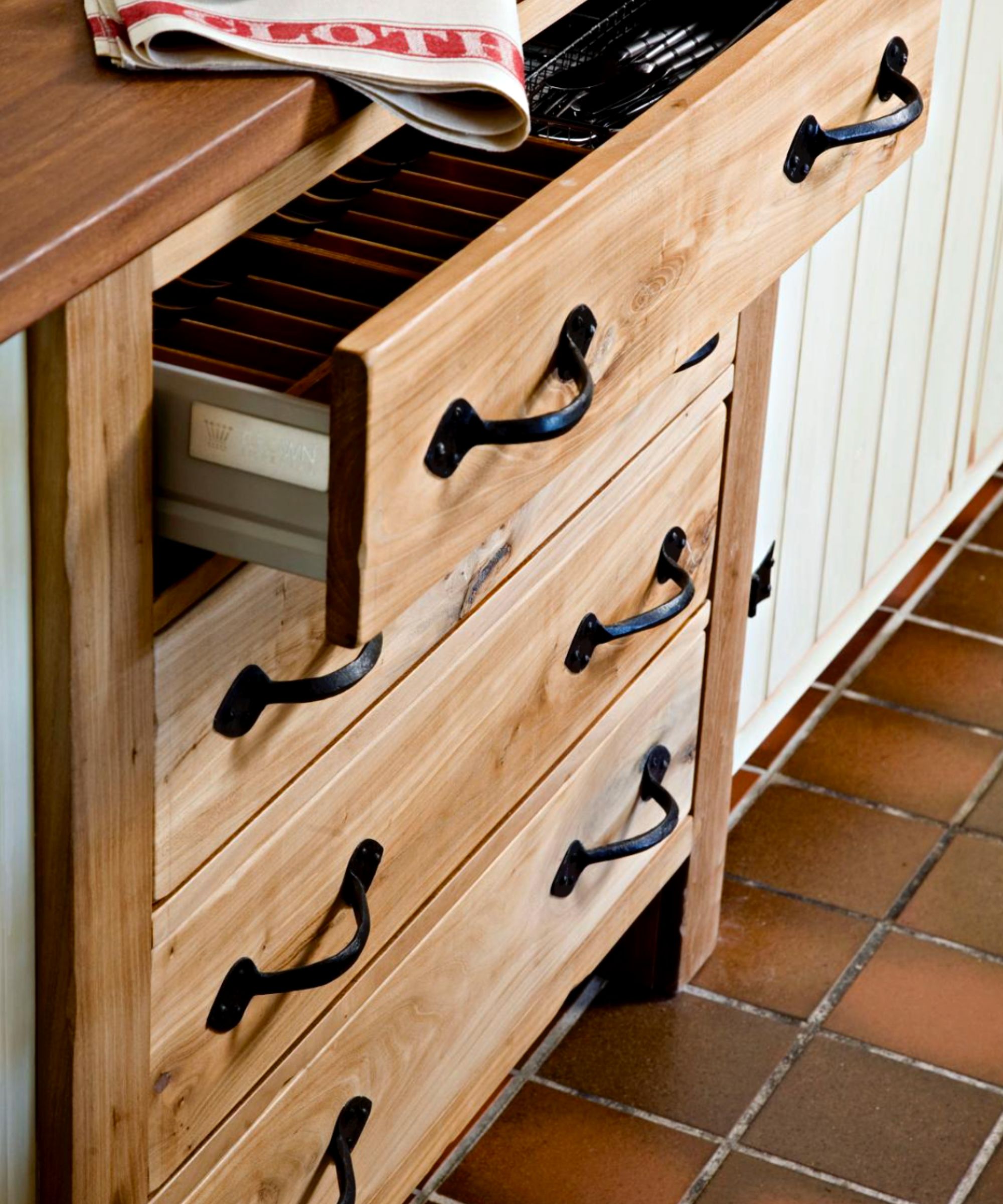
Home organization goes out of the window when you have a designated space where you allow yourself to throw junk in and not address it until you are forced to declutter when you feel overwhelmed.
'Conquering the dreaded junk drawer and removing the option to throw random, uncategorized items together forces you to think about what you keep in your home,' says Gabriella Dyson, Head of Solved for Homes & Gardens. You can still have a drawer for items that are otherwise hard to sort, but ensure they are all practical and used regularly.

Gabriella Dyson is Head of Solved at Homes & Gardens, editing and writing practical advice for homeowners in the process of cleaning, decluttering, or attempting home improvements and DIY projects. Gabriella previously worked on Homebuilding.com, writing features about issues surrounding historic and listed building projects.
16. Establish an organizing style
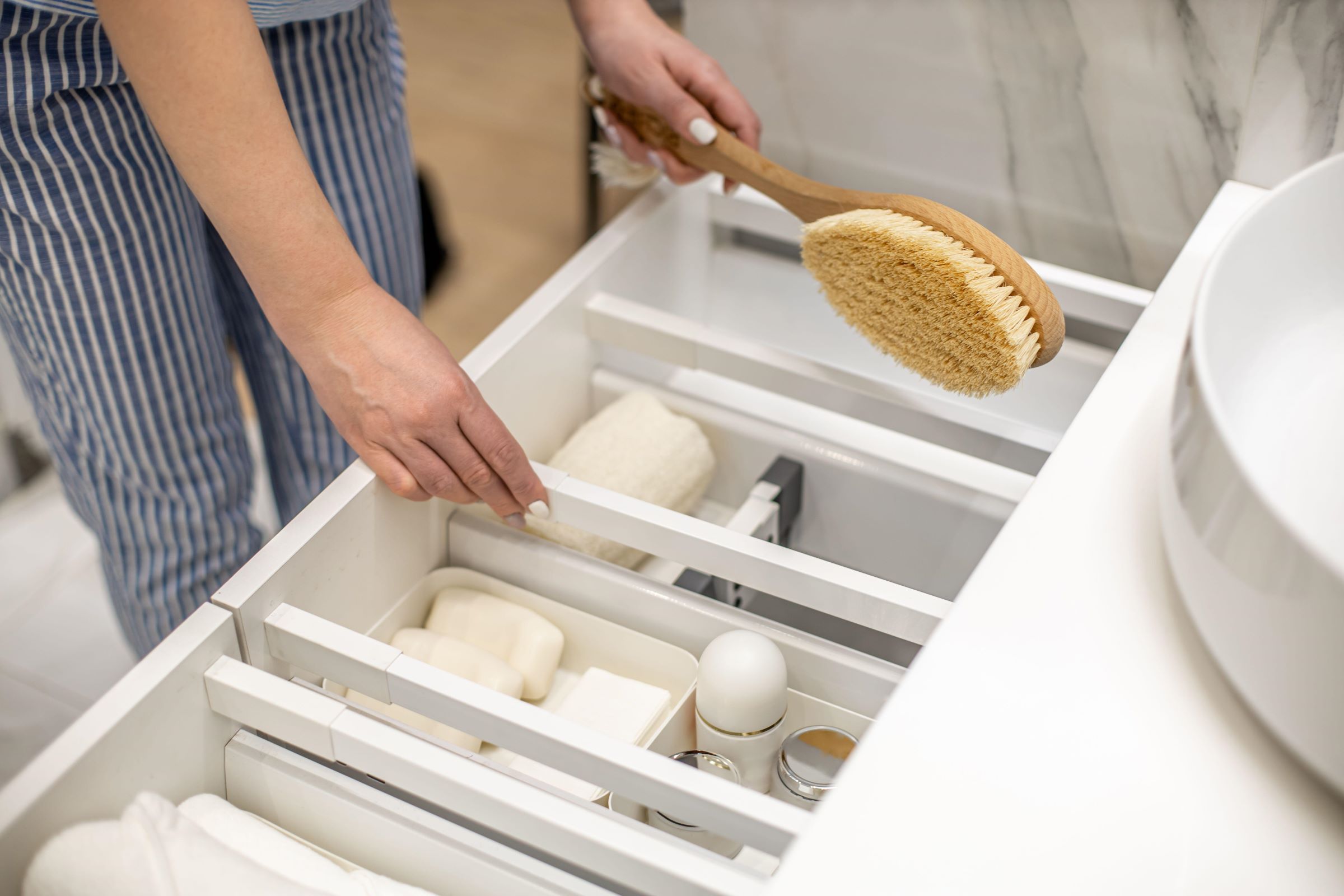
Just as you find your home design style, you need to find your organizing style. Not every method for decluttering and organizing will work for you, just as not every interior design style will match your preferences.
With such varying organizing and decluttering techniques, from the Ski Slope decluttering method to the one-in-one-out rule, there are plenty of approaches to try.
We suggest trying a few different methods on different days and evaluating which one had the best results, which helped you avoid burnout easiest, and which one you feel yourself gravitating towards next time.
All-in-One Declutter Planner | View at Etsy
This printable decluttering planner is all you need to help tackle your home's mess without missing a step. It is perfect for keeping track of your belongings and starting your first big clearout.
FAQs
How do I organize my house with too much stuff?
The most obvious answer to organizing a house with too much stuff is to declutter, getting rid of anything you deem 'too much', such as trash, items you no longer use, or duplicates. Once you have decluttered, then you can start adding storage units and organizing products to contain the leftovers.
How do I begin to organize my house?
Organizing a house all in one go can feel daunting, so it’s best to approach it room by room. It feels less daunting this way. One of the best organizational tips we can offer is to start with a good clear-out. Go through each item and inspect it thoroughly. Create piles for keeping, donating, binning/recycling. Move any items that don’t belong in that room to their rightful home.
If you’re organizing a small space, consider putting aside lesser-used items at this point – seasonal clothing, sentimental items, shoes, sports equipment, glassware, kitchen appliances, and so on. Box them up and store them elsewhere in the home to free up room for other things.
After a good clear-out, you’re well-placed to start thinking about organizing the space to its best potential.
How do I organize my house and keep it organized?
The best way to organize your house (and ensure it stays that way) is to implement simple, easy-to-follow organizational systems. Even with the best intentions, you’re unlikely to stick to it if it's too complicated. But stick to it, you must. Trust us: taking the extra 30 seconds to put something back in the right spot will save you time and effort in the long run. Clutter that’s allowed to build over time can quickly put pay to any organizational system, not to mention take up valuable storage space. Setting time aside to regularly review your belongings is the best way to identify items you no longer need before they pile up. Store them in a container tucked out of the way, in the corner of your closet, or in the garage, for example, then donate the contents once it’s full.
When organizing your home, try to avoid organizing every room in one day. Breaking the tasks down into more manageable tasks and spreading them over several days can help you avoid burn out and decision fatigue, and make better progress, even if it takes you longer to complete.
Next, learn about the things to do daily to be more organized at home.
Sign up to the Homes & Gardens newsletter
Design expertise in your inbox – from inspiring decorating ideas and beautiful celebrity homes to practical gardening advice and shopping round-ups.
For 10 years, Tara King worked as a Content Editor in the magazine industry, before leaving to become freelance, covering interior design, wellbeing, craft and homemaking. As well as writing for Ideal Home, Style at Home, Country Homes & Interiors, Tara’s keen eye for styling combined with a passion for creating a happy – and functional – family home has led to a series of organization and cleaning features for H&G.
- Chiana DicksonContent Editor
-
 Garden experts warn against overcrowding flower beds – why this on-trend look is the worst thing you can do
Garden experts warn against overcrowding flower beds – why this on-trend look is the worst thing you can doIt's tempting to create an abundant, overflowing garden bed, but it can limit your plants in more ways than one
By Tenielle Jordison Published
-
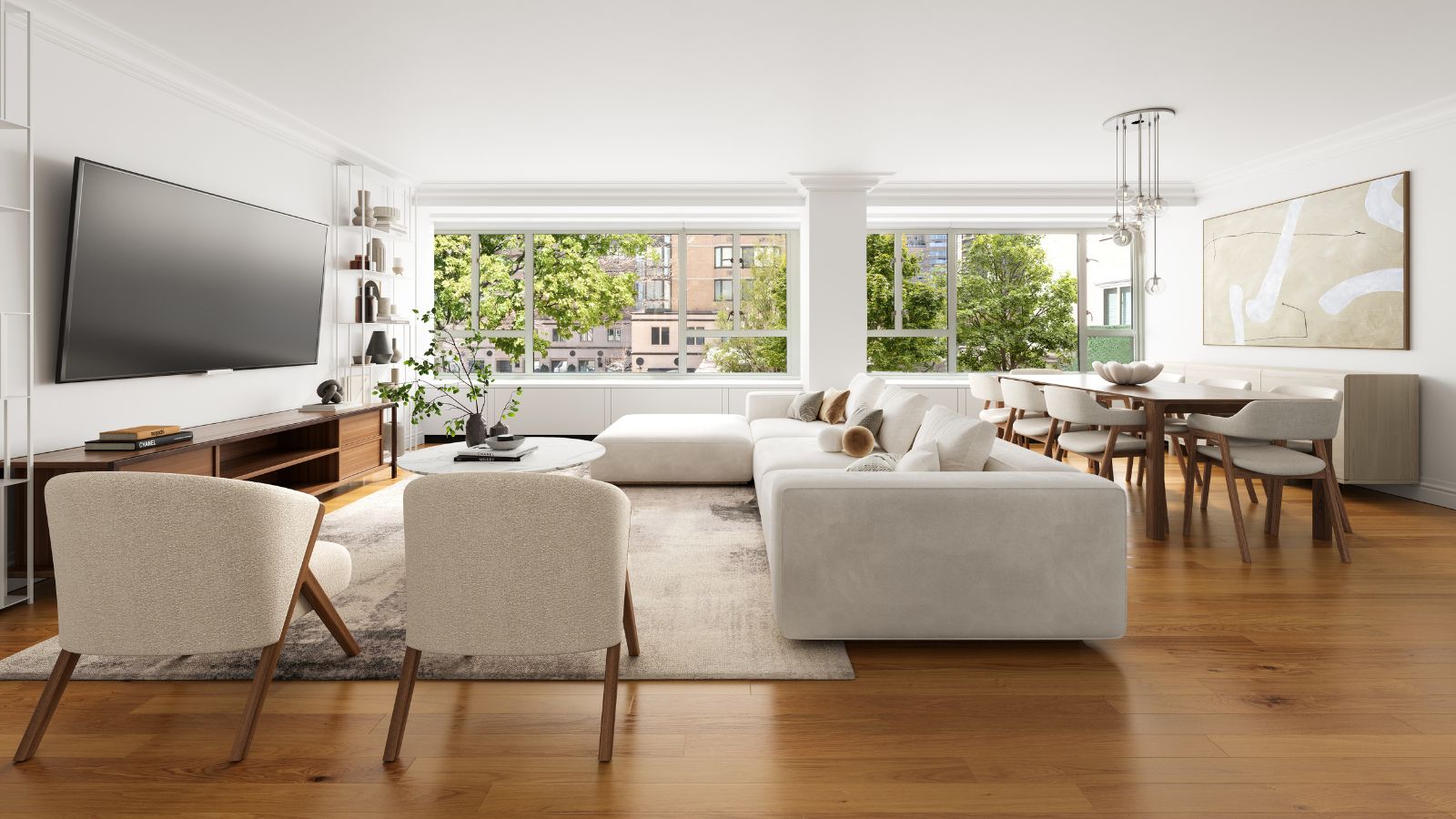 Grace Kelly's former living room set the blueprint for quiet luxury – you can explore her NYC penthouse (listed for $3.25 million)
Grace Kelly's former living room set the blueprint for quiet luxury – you can explore her NYC penthouse (listed for $3.25 million)A unit in the storied Manhattan House, where Grace Kelly, Benny Goodman, and Shirley Jackson have lived, has hit the market – it's a masterclass in neutrals
By Hannah Ziegler Published
-
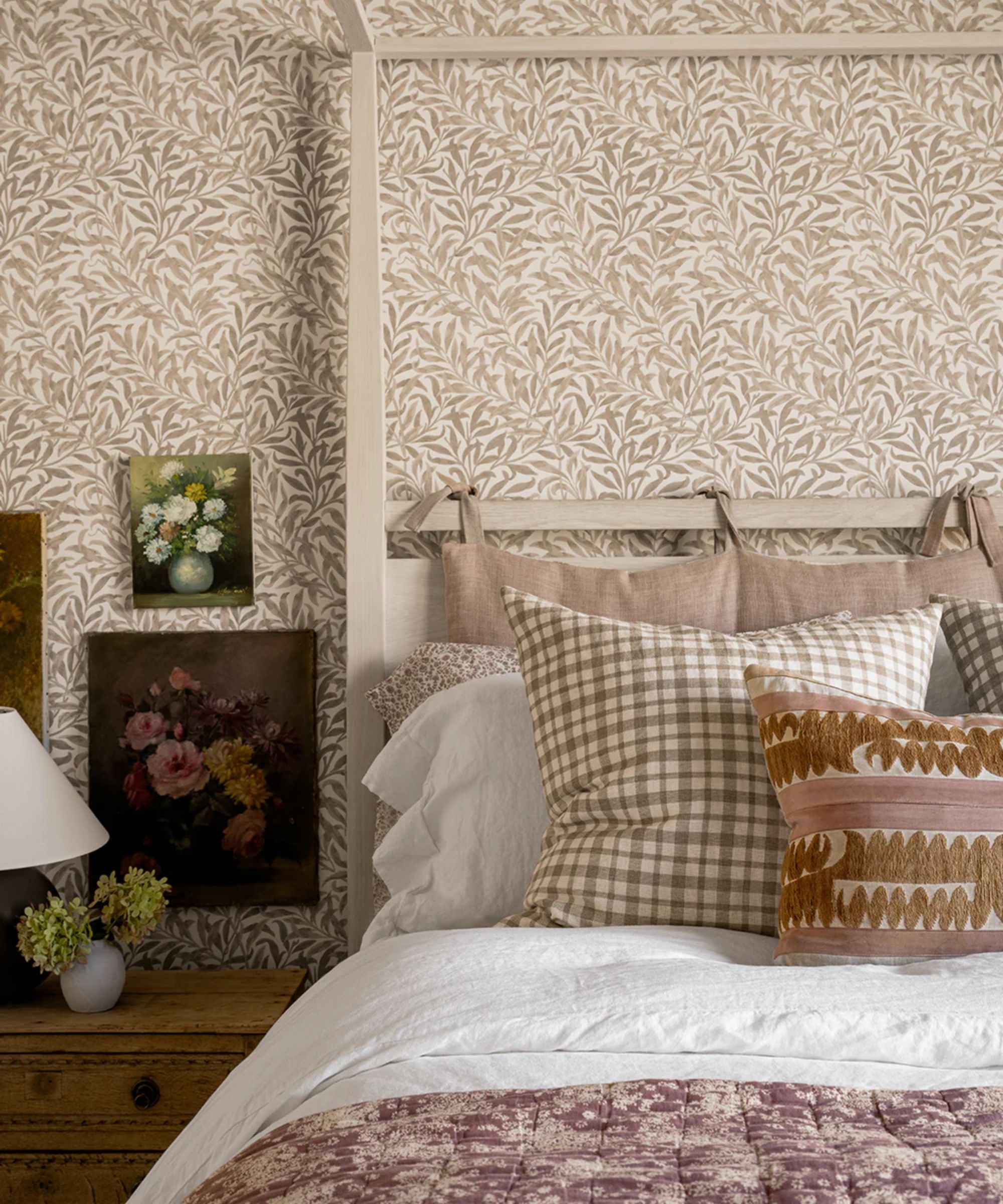 6 ways to prevent mold and damp in bedrooms – expert solutions to maintain a safe sleep environment
6 ways to prevent mold and damp in bedrooms – expert solutions to maintain a safe sleep environmentDon't sleep on these six tips, experts urge
By Seraphina Di Mizzurati Published
-
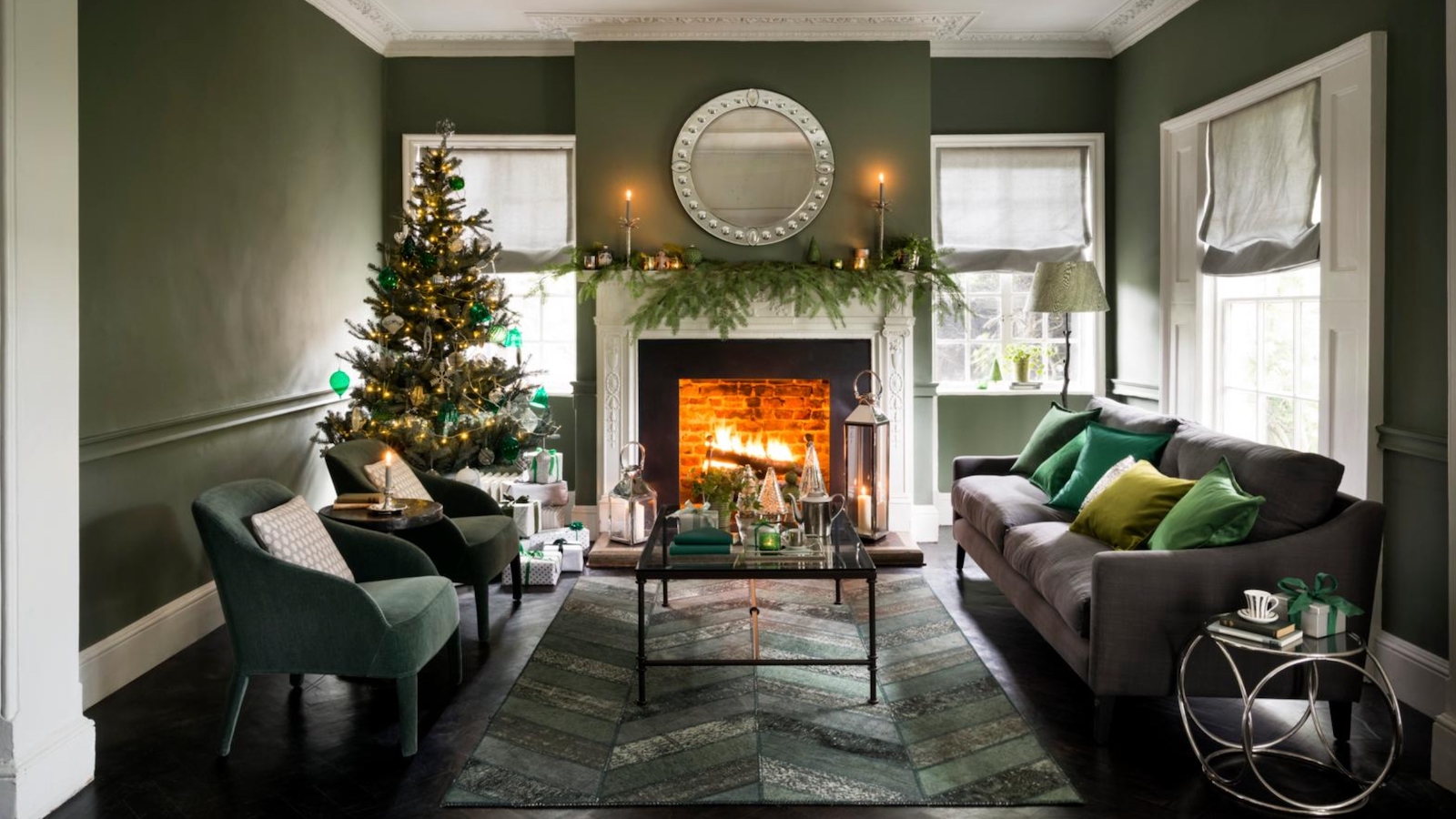 I tried the easy Reverse Advent Calendar decluttering method to clear out my home before Christmas – it's brilliant if overwhelm usually gets in your way
I tried the easy Reverse Advent Calendar decluttering method to clear out my home before Christmas – it's brilliant if overwhelm usually gets in your wayIt left my home feeling lighter with minimal effort
By Ciéra Cree Published
-
 I tried the one-in-one-out method to keep my space clutter-free and it changed my relationship with shopping for good
I tried the one-in-one-out method to keep my space clutter-free and it changed my relationship with shopping for goodI added a few caveats that made the rule work better for me
By Ciéra Cree Published
-
 8 things you should never store in a playroom and where to put them instead
8 things you should never store in a playroom and where to put them insteadRead our top tips on how to keep your playroom organized and fun at the same time
By Sophie Warren-Smith Published
-
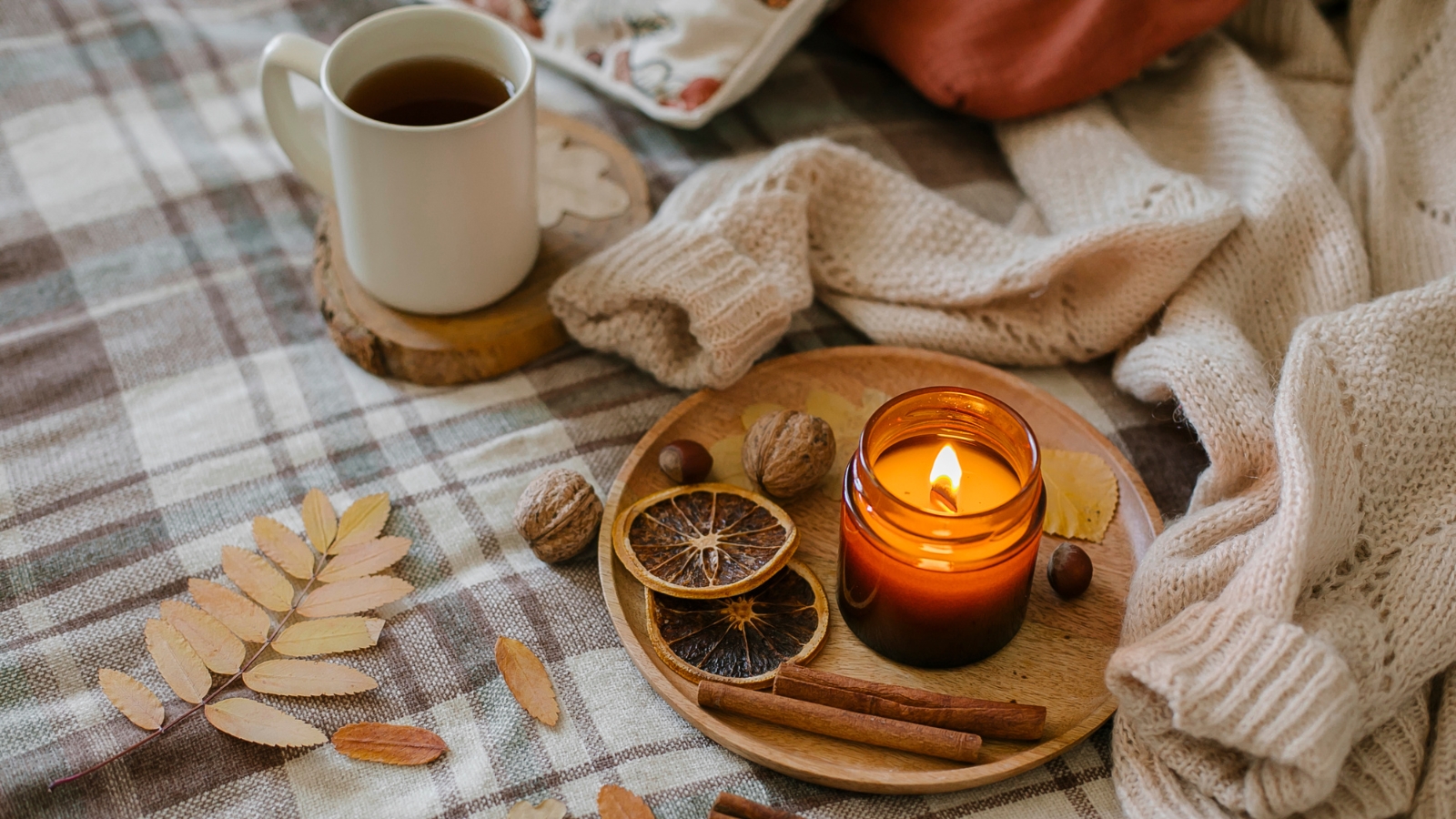 7 fall home maintenance tips experts never skip in their own properties
7 fall home maintenance tips experts never skip in their own propertiesSeven pro steps to maintain your home this fall
By Andy van Terheyden Published
-
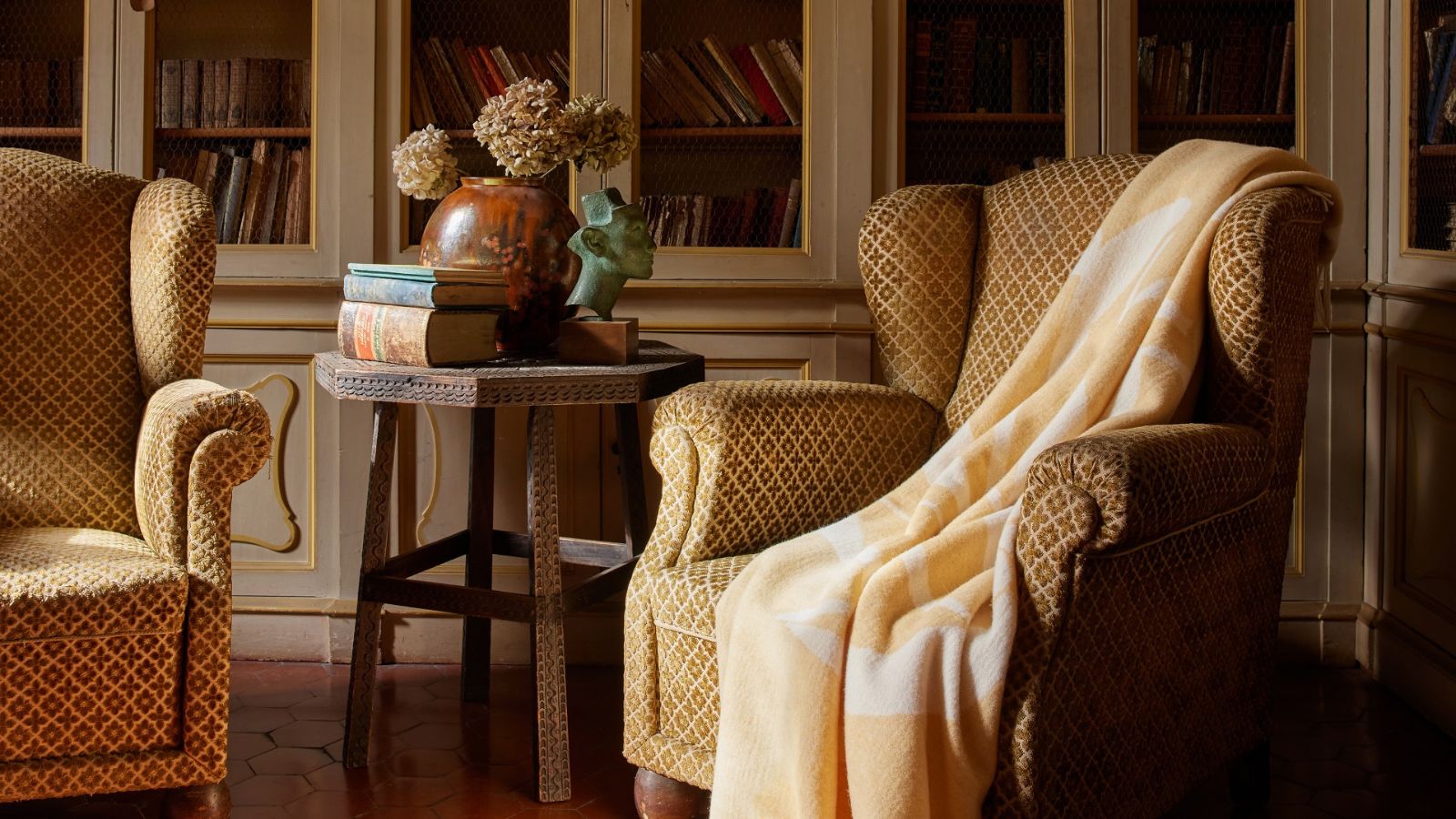 I’m in chronic pain and have used heating pads for 15 years to cope at home in cold weather – the best I've ever used is on sale for Amazon Prime's last day of deals
I’m in chronic pain and have used heating pads for 15 years to cope at home in cold weather – the best I've ever used is on sale for Amazon Prime's last day of dealsI've used more than 30 electric heating pads and they're my go-to for pain relief
By Punteha van Terheyden Published
-
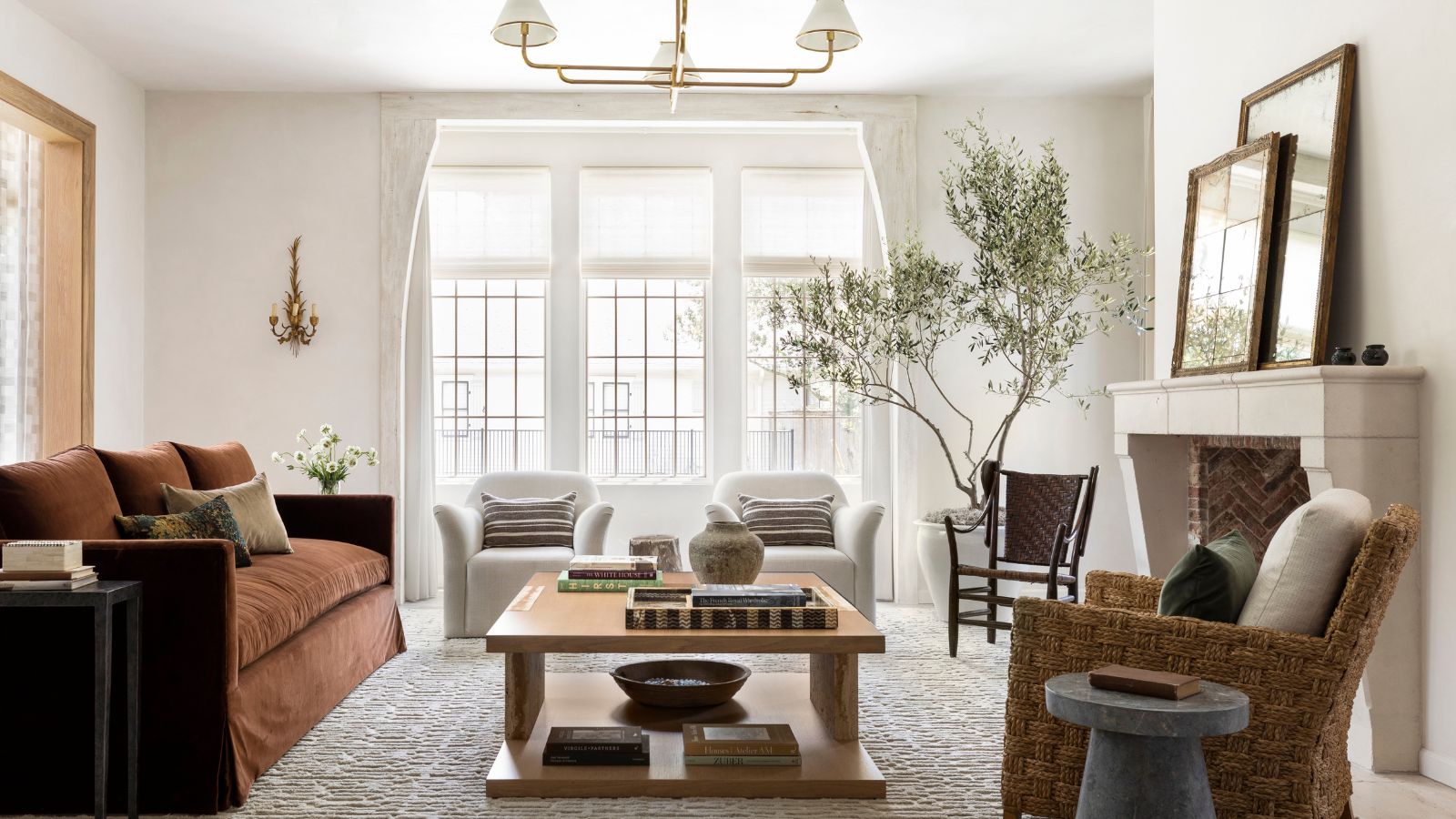 A professional organizer's best seasonal storage tips for living rooms – they're the key to having easy access, reduced clutter and improved functionality
A professional organizer's best seasonal storage tips for living rooms – they're the key to having easy access, reduced clutter and improved functionalityWelcome in the new season with stylish storage tips for fall
By Ottilie Blackhall Published
-
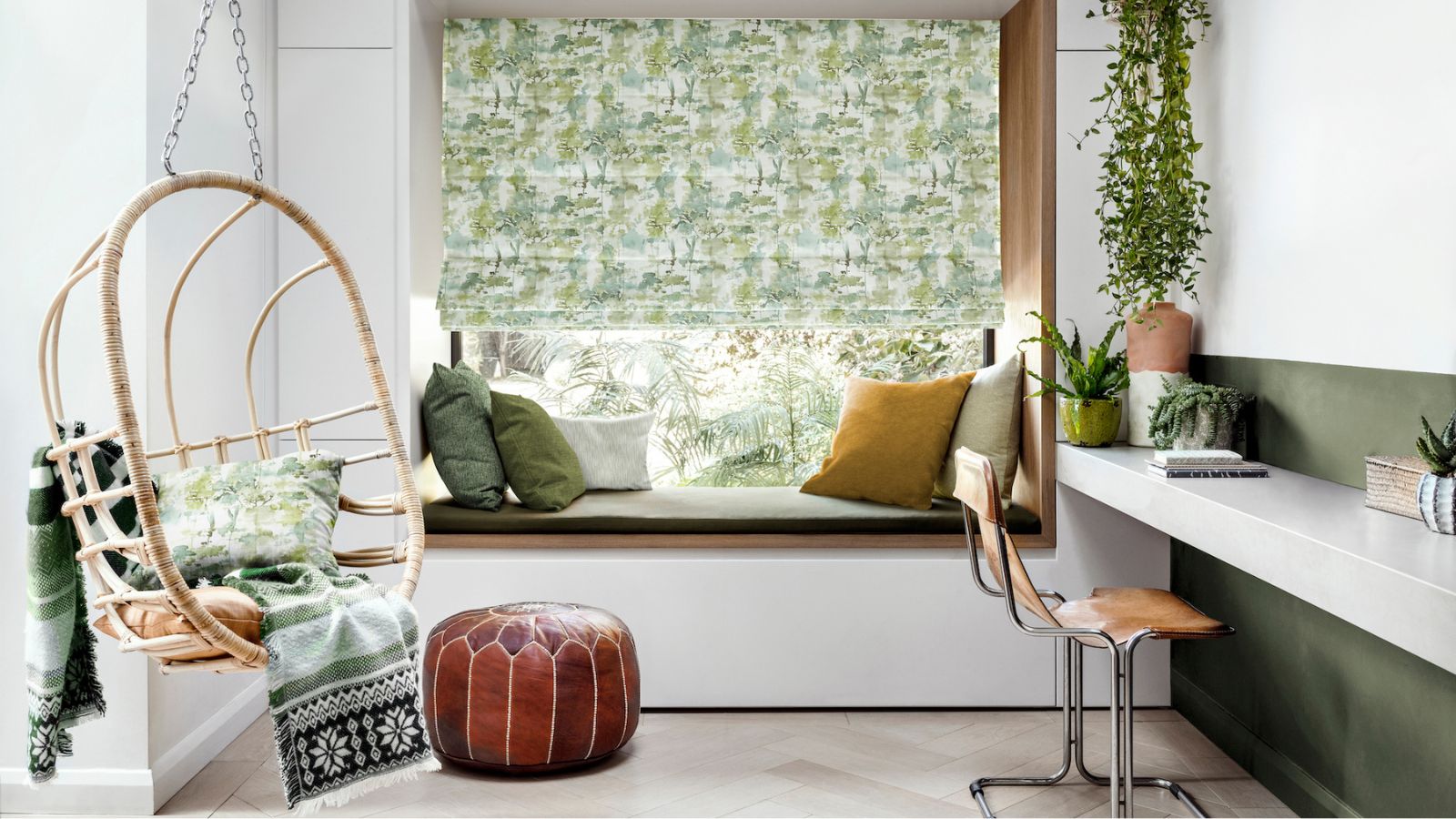 How to elevate your teen's former bedroom into a beautiful home office
How to elevate your teen's former bedroom into a beautiful home officeTips and advice from an interior designer and a professional organizer on how to transition your teen's bedroom into a home office
By Ashley Chalmers Published
